REPERTOIRE TIPS
KALEVI AHO
Concerto for alto flute and string
orchestra (2021) Dur: 23’
This concerto composed on the initiative of flautist Matei Ioamescu consists of six short movements performed without a break. The soloist sometimes swaps his alto for a bass flute, which gives the music a mystical, shamanistic feel as the strings accompany with high flageolets. The 20-piece orchestra gives the slender sound of the alto flute plenty of space. The result is a work of melodic expression and lyrical yet dramatic episodes.
Simplicius Simplicissimus (2021) Dur: 24’
Concerto for E flat clarinet and orchestra
The idea for a piccolo clarinet concerto was inspired by and follows the plot of the picaresque novel Simplicius Simplicissimus of 1669 by Hans Jacob von Grimmelshausen. The soloist is Simplicius and in telling of his fantastic adventures the player has to match the events, at times in reverent, simple vein and at others flashy and mischievous, or as if parodying a grand operatic diva.
TOBIAS BROSTRÖM
Stellar Skies (2015) Dur: 10’
Concertino for flute and string orchestra
This is a quietly flowing, lyrical piece, in which harmony and sonority are central. The shimmering texture of the string orchestra, with trills, tremolos and figurations, forms a background against which the livelier phrases and the free declamation in the solo part are delineated.
JÖRGEN DAFGÅRD

Caprism (2013) Dur: 30’ Concerto for clarinet and orchestra: 2222-4331-12-hp-str
After a sojourn in Capri, the elements earth, water and air served as inspiration to Dafgård’s graphic clarinet concerto in three movements. Already in the first chords the image of the dramatic rock “Monte Barbarossa” is hammered in. In the hauntingly beautiful second movement (Elegy/The Water – Grotta azurra) we are rocked to rest by the waves in a swaying orchestral texture in triple time, over which the clarinet plays a slow, sorrowful melody. In the virtuoso third movement (The Wind –Roman Fresco) whirlwinds blow up, lashing the waves against the cliffs.
PAAVO HEININEN
Autrefois (2010) Dur: 33’ for flute and orchestra: 2211-2000-hp-str Heininen said that the Flute Concerto was not like his other music. Its harmonies are more consonant, the chord progressions sometimes lead to tonal cadences, and the rhythms are sometimes spicy. The orchestral make-up determines the tone: pastoral rather than aggressive – classical in fact. The solo part accentuates gentle, mysterious and expressively melodic values.
MAIJA HYNNINEN
Incandescence (2017) Dur: 18’ Concerto for Oboe and Orchestra: 2222-2221-02-hpstr or 2222-2200-02-str
The concerto glows in different colours and the highly virtuosic solo part glimmers and glides over the fluctuating textures of the orchestra. A major inspiration was scientific phenomena of incandescence. Each of the five movements portrays a different character and the music weaves together elements of surprise and humour.
FREDRIK HÖGBERG
Baboon Concerto (2017) Dur: 20’
Concerto for bassoon and orchestra: 2222-222012-0-str


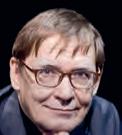
This 14-movement concerto is based on Aesop’s famous fable of the busy ant and the lazy grasshopper, the latter being replaced here by the lazy baboon, who would rather entertain and smoke than gather food. This is a playful and virtuoso concerto that explores all the bassoon’s possibilities. It is rhythmical and colourful, with lots of theatrical pranks and humour.
Recent concertos for woodwind

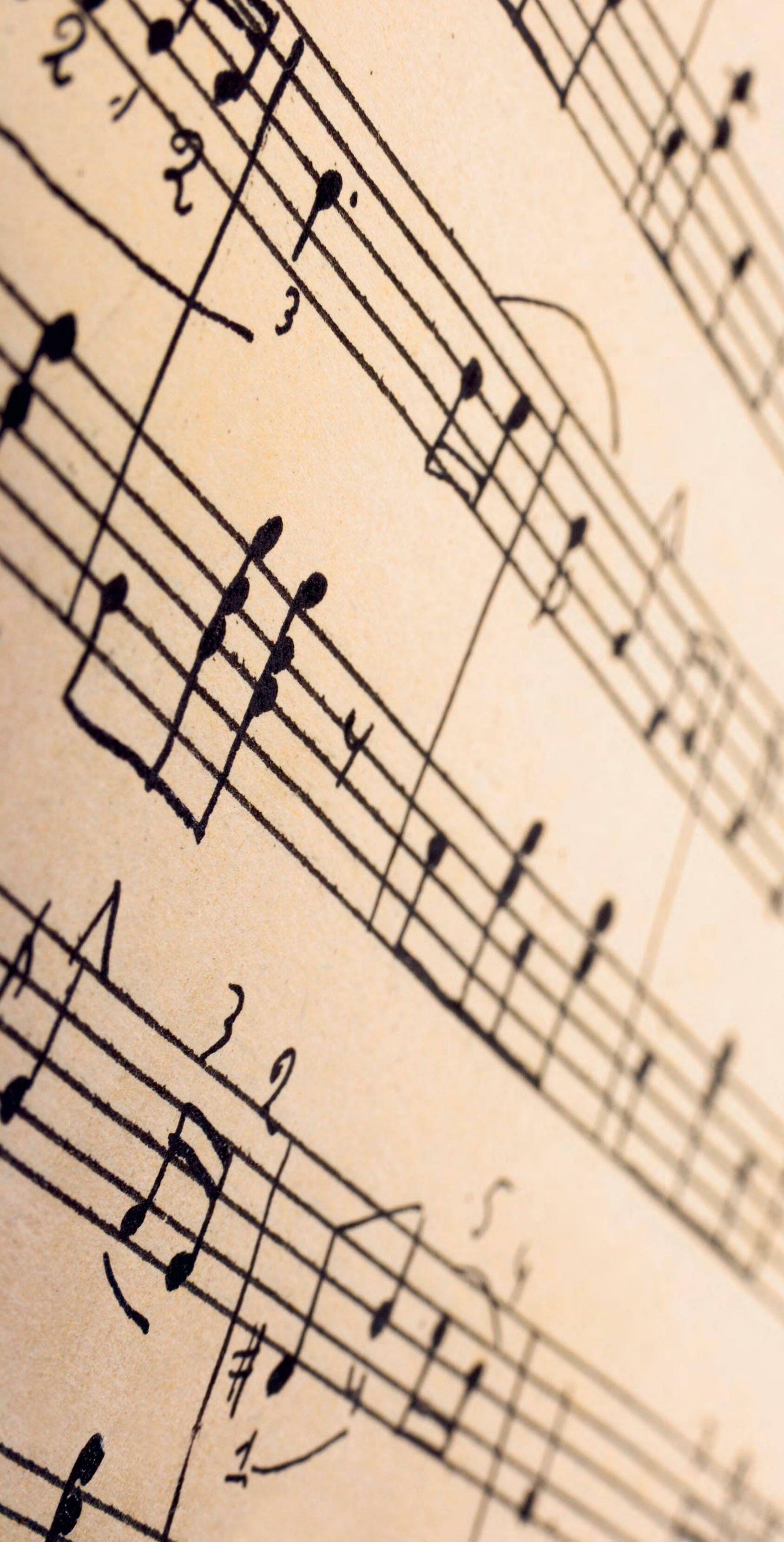
MATS LARSSON GOTHE


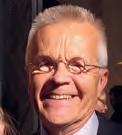

Ricerco 2 (2011) Dur: 20’
Concerto for bassoon and orchestra: 2222-4231-timp-2perc-hp/cel-str
The concerto is based on an interplay between bassoon and orchestra, in which the orchestral episodes are often violent, dynamically contrasting gestures over against the soloist. A relationship arises in which the bassoon is urged on to do well-nigh impossible stunts in order to please the orchestra. In the calmer second section the bassoon even tries to sound like the orchestra, playing chords and adapting, to merge and seek acknowledgement.
OLLI KORTEKANGAS
Clarinet Concerto (2014) Dur: 30’ 2222-2221-02-str
The concerto is a colourful and emotionally impressive jaunt. Kortekangas is particularly skilful at exploiting the clarinet’s ability to produce an almost insubstantially quiet sound. The soloist –the “individual” – has something to say almost all the time, but as part of the orchestra – the “collective” – rather than always being in the forefront. The concerto has two cadenzas, the second of which to some extent has to be improvised.
MARIE SAMUELSSON



A New Child of Infinity (2015) Dur: 10’ Concertino for clarinet and orchestra: 3312-2220-2perc-str
Part Two of Samuelsson’s Love Trilogy is about the infinite love for children and is dedicated to her two sons. The clarinet part moves, like small children’s feet, lightly and playfully over the orchestra’s evocative sonorities. But just as children are multifaceted, here there is also a deeper tone of seriousness and mystery. The concertino is concluded, however, with a bright feeling of hope for the future.
ALBERT SCHNELZER
Oboe Concerto – The Enchanter (2009)
Dur: 25’ 2222-2200-01-str
Schnelzer’s concerto has two sources of inspiration, Salman Rushdie’s “magic realism” and François Leleux’s enchanting oboe playing. And an atmosphere of magic is palpable right from the start, where the oboe discreetly emerges from the shimmering and colourful orchestral texture, which is later characterised more by dancing rhythms. The slow second movement, intoxicatingly beautiful, is calm, while the violent third movement rushes forward with continual time signature changes. The calm returns, however, at the very end of the concerto, which concludes with a couple of tones from the oboe alone.
Magical Allusion (2015) Dur: 10’ Concertino for oboe and small orchestra: 0102-2000-10-str
This concertino, too, is characterised by Schnelzer’s shimmering magic and dancing features. The concerto was written with the idea in mind that it could also be performed as a complement to Mozart’s oboe concerto, hence the smaller orchestra.
JONAS VALFRIDSSON
The Swan Maiden (Svanhamnen) (2017) Dur: 15’
Concertino for bassoon and string orchestra
For his concertino Valfridsson has been inspired by the artist John Bauer’s illustration of the romantic but sad fairy tale ‘The Swan Maiden’. This impressionist-tinged music clearly captures the atmosphere of mysteriousness, the anxiety, the melancholy and wistful moods both in the narrative and in Bauer’s painting.
LOTTA WENNÄKOSKI
Soie (2009) Dur: 20’
for flute and orchestra: 3232-2211-02-pf-hp-str
This is one of the best-loved pieces by Wennäkoski and it comes across as a concerto. The title, meaning ‘silk’ in French, refers to the concept of texture and the three movements reflect different types of weave. The vivacious and colourful tone language has both sensitivity and roughness, virtuoso speed and slow meditation. The solo part is demanding, calling for both modern techniques and a solid traditional flute sound.
REPERTOIRE TIPS
KALEVI AHO
Symphony No. 17 “Symphonic Frescoes” (2017) Dur: 63’ 3433-4331-13-org-hp-str
This large-scale work culminates Kalevi Aho’s career as a symphonist and presents his skills as a master of orchestral handling. According to the critics: “It is one of the finest, most impressive works of art ever produced in this country, something that exists for the listener, making his soul and innermost being shiver.” The symphony was a commission from the Lahti Orchestra to celebrate Aho’s 70th anniversary in 2019.
TOBIAS BROSTRÖM

Symphony No. 1 –

Albedo (2019-2020) Dur: 40’ 3333-4331-timp-3perc-hp-pi/cel-str
The Symphony Albedo is the second work in a trilogy that began with the double concerto Nigredo. The titles represent different phases in the field of alchemy. Albedo stands for the white, pure phase that will bring light and clarity. The symphony is divided into three movements: Anima, Animus and Inquieto, and will be premiered by the Gothenburg Symphony Orchestra and Santtu-Matias
DANIEL BÖRTZ

Sinfonia 12 (2010-2011) Dur: 40’ bar. 3343-4441-15-1-str
Sinfonia 13 (2015-2018) Dur: 65’ 2 reciters, mz, c-ten, bar.
3333-4331-timp-perc-hp-str
During the period 2010-2018 Daniel Börtz wrote two large symphonies, both with vocal parts to texts by Kjell Espmark. In Sinfonia 12 a baritone soloist appears in the slow second movement, singing a setting of the poem ‘Caribbean Quartet’. It is about those who have gone before us and have left visible and invisible traces. The monumental Sinfonia 13 to texts from Espmark’s ‘The Creation’ could almost be considered a Requiem for mankind. The reciters and vocal soloists, speak of war, genocide, flight and persecution. In the music there is the blackest darkness, violent aggressiveness, but also the mildest tenderness.
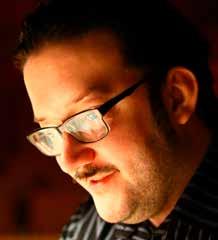
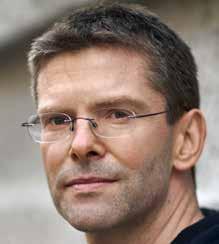
ANDERS ELIASSON
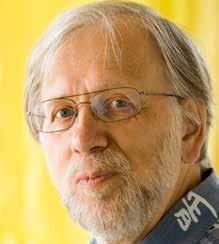

Symphony No. 4 (2005) Dur: 25’
4333-6331-13-str
Eliasson’s fourth symphony seizes the listener by the throat, at the same time as it conveys a most singular beauty with its tenderly entreating melodic melancholy. It is music charged with energy, constantly moving forward with strong and steady force. But at the very end comes a sudden opening to something else: the symphony ebbs away in a short epilogue with a flitting solo for flugelhorn.
TOMMIE HAGLUND
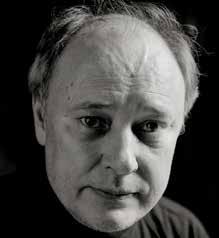


Symphony (2018) Dur: 50’
3333-4331-timp-4perc-hp-pf/cel-str
In his Symphony Haglund wants to depict the feelings we have when confronted with the loss of innocence in our time. He has tried to weave in diabolical, painful and dreamy states of mind. It is a singularly beautiful, melancholy music containing both darkness and life-giving light, vibrating and shimmering in different colours.

Symphonies: some recent and older gems
KIMMO HAKOLA
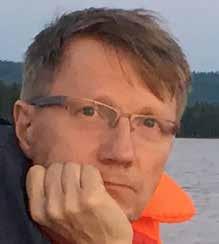
Symphony (2018) Dur: 43’
3333-4331-13-pf.cel-2hp-str
Hakola’s symphony is a monumental work and a real horn of plenty. Its salient features are its ability to surprise, and its powerful emotional states: a mighty hammer sets the work in motion and affectively ends it. In contrast to the rhythmic ecstasy, the slow movement presents some magically beautiful harmonies and melodic spans made all the more enchanting by the spell-binding sounds conjured forth from crystal glasses.
HALVOR HAUG

Symphony No. 4 (2001)
Dur: 23’
3333-4331-13-hp-str Symphony No. 5 (2002)
Dur: 24’
3333-4331-13-hp-str
Haug’s Fourth and Fifth Symphonies were composed very close to one another in time and were both written in the form of one continuous movement. Haug displays here his masterly ability to utilise the various sound qualities of the instruments to create energy, tension and drama. The music is characterised by profound expressiveness and melancholy. The Fourth Symphony was written around the time of 9/11 and is dedicated to all the innocent victims of terrorism throughout the world, while the Fifth is dedicated to his father.
PAAVO HEININEN
Symphony No. 7 (2020)
Dur: 32’ 3333-4sax-4331-13-2hp-pf-cemb-str Symphony No. 8 (2021) Dur: 43’ 3333-4sax-3331-13-2hp-pf-cemb-str
Heininen composed his last two symphonies in the final years of his life. Both germinated out of character sketches and their structure is based on symmetry. The seventh began with the idea of a single fairly massive movement. Its core is framed by light, airy sections so that the maximum and minimum tempos and dynamics create a chiasma-like pattern. The Finnish Radio Symphony Orchestra premiered the 7th symphony in 2021 and the 8th still awaits its first performance.
MIKKO HEINIÖ
Symphony No. 3 (Sinfonia Concertante for Percussion and Orchestra) (2017) Dur: 30’ 3333-4331-13-pf+cel-hp-str
This symphony is also a concerto with percussions, piano, celesta and harp in the leading role. It is a work of intoxicating percussion rhythms and a feast of rich orchestral sounds. The use of djembe drums affords an exciting perspective from outside the sphere of western art music. The orchestration is persistently inventive right up to the brilliant final thumps.
HELVI LEIVISKÄ

Symphony No. 2 (1954) Dur: 23’ 3332-4331-11-hp-str Sinfonia Brevis (1962/72) Dur: 14’ 3332-4331-11-hp-str
Leiviskä’s music has been gaining increasing interest during the last years. Her second symphony is moody and meditative. One of its main themes is a march heard in various hues, a funeral march included, but at times the music also acquires sharper tones evocative of Shostakovich. Leiviskä regarded the Sinfonia Brevis as her fourth symphony. It combines dramatic, playful and lyrical ingredients and ends with a splendid triple fugue.
HERMAN RECHBERGER
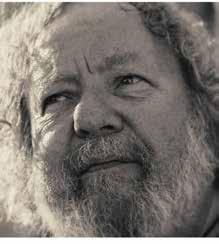
Symphony No. 2 “Hawwa” (2003)
Dur: 25’
2222 4331-14-1-keyb-str, 2 sop, bar Rechberger was a contemporary Renaissance man interested in several cultures, as demonstrated in this exciting piece. “Hawwa” is the Arabic-Persian expression for “passionate”. The English translations of the text are drawn from the 14th century Sufi poet Seyyid Imadeddin Nesimi and the Arabic texts are from North-African nawba poetry (the love poems of Arab-Andalusian music).
ALBERT SCHNELZER
Symphony No. 1 – Azraeel (2007) Dur: 29’
2222-2200-01-0-str
One of Schnelzer’s major sources of creative inspiration is Salman Rushdie and his magic realism. The impulse to write the symphony originated in the tumult arising from The Satanic Verses. Here Schnelzer depicts these events in six movements. The music contains everything from brutal and tumultuous sections, and dance rhythms in varying time signatures, to quietly meditative moods.
BENJAMIN STAERN
Symphony No. 1 – Polar Vortex (2014) Dur: 27’
2222-4231-timp-2perc-hp-pf/cel-str Symphony No. 2 – Through Purgatory to Paradise (20192021) Dur: 25’ 3333-4331-timp-4perc-hp-pf/cel-str Staern’s First Symphony is a sounding journey in three movements focusing on dramatic natural phenomena. It is a brilliantly colourful depiction of crispy, frosty and fragile sonorities, shimmering light in the form of magical overtones, concluding with a finale that is a ritual volcanic dance with rumbling rhythmical percussion. The Second Symphony is inspired by Dante’s The Divine Comedy. The musical tone material builds to a large extent on two bars in Lili Boulanger’s d’Un soir triste, out of which Staern generates a tone scale. The colourful orchestral texture is more transparent than in his earlier works and there is a greater focus on melodies. Long, tranquil, airy sections are interrupted by powerful, energetic outbursts.
TAPIO TUOMELA
Symphony No. 3 “Crossroads” (2017) Dur: 17’
2222-4231-02-pf-str
Some of the material of Tuomela’s opera Neljäntuulentie (Crossing of Four Roads) was reworked for his third symphony. This compelling music proceeds like a musical fantasy, undulating from one association to another. The flowing movement and the pulsating rhythm merge with dreaminess and late-Romantic wisps of melody.
HIGHLIGHTS 3/2022 7
Rouvali on 7 October.
KALEVI AHO
Concerto for Viola and Chamber Orchestra (2006) Dur: 24’ 1111-1000-01-str
A captivating, dramatic work that begins with a weighty viola passage and proceeds as a virtual tour de force for the soloist. At times the soloist builds up speed and engages in dialogue with the orchestra and percussion in turn. A rhythmically vibrant work, the concerto also has some lyrical moments and a sizeable cadenza in the delicate nocturne.
TOBIAS BROSTRÖM
Cello Concerto (2011) Dur: 21’ 2222-2200-10-0-str


The concerto opens suggestively and slowly with repetitive chords in the orchestra, forming the harmonic basis that is expanded gradually. The solo cello’s pentatonic motif develops from out of the orchestra’s carpet of sound, a motif that recurs throughout the entire work. Brisk sections with more temperament and rhythmic accents alternate with parts that are linked to the harmonies and motif of the beginning. The end is a slow diminuendo that fades away far off in the distance.
JÖRGEN DAFGÅRD

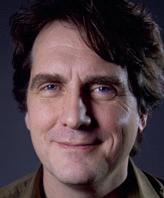
Eclipse – Concerto for Violin and String Orchestra (2018) Dur: 25’
Eclipse was composed in connection with a month-long stay in Paris, which is reflected in the work’s tonal language with its French touch. Lightness but also intensity characterize the outer movements, while the focal point is on the fateful and dramatic intermediate movement. However, a turnaround in the final stage of this movement causes the light to flow in.
ANDERS ELIASSON
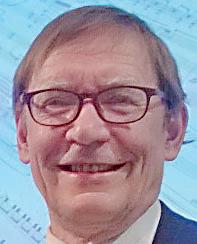
Einsame Fahrt – Concerto for Violin (2010) Dur: 25’ 2222-4200-02-cel-str
The violin is present throughout in Eliasson’s continually progressing journey in one coherent movement. The solo part is incredibly virtuosic but idiomatically written as well. Melodic and lyrical lines spread out between the fast sections. The tone language is intense and profound and one recognises the Eliassonian restlessness and the harmony that is all his own.
FREDRIK HÖGBERG
Absent Illusions – A Hunt for the Eluded Muses (2017) Dur: 25’
Concerto for Violin/Viola and Orchestra: 2333-4331-13-hp-pf-str (video optional)
In this concerto the soloist plays both violin and viola. The work is divided into 14 short movements, with episodes representing the various characters of the nine Muses. In the music the romantic and the fervently beautiful elements coexist with the explosive and the harsh. Opposites that suddenly harmonise without requiring consonance. Virtuosity ripples on top of rumbling layers of rhythms and timbres.
MATS LARSSON GOTHE

Concerto for Violin, Cello and Orchestra ‘Sisyphus Dreams’ (2010) Dur: 26’ 2222-2200-10-0-str
Larsson Gothe has always been fascinated by the fate of Sisyphus, who was condemned to roll a big stone up a hill. Each time it would fall back down and he had to roll it up again, throughout all eternity. In the double concerto Sisyphus is ”played” by the cello. Then the violin comes into the picture in an unexpected visit. It all develops into a heated relationship drama between a violin, that is just as cheeky and harsh as it is passionate, and a more diligent and unaffected cello.
JUKKA LINKOLA


Double Bass Concerto (2005) Dur: 32’ 1111-1110-02-pf-str
The concerto opens with a jazzy feel and there are also references to Baroque and tango. This five-movement work is a fine demonstration of the double bass’s ability to soar and sing to spheres usually reserved only for the violin. The soloist’s technique is put to the test in passages that require great virtuosity. A reduction is also available.
AULIS SALLINEN
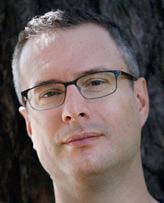
Variations for Cello and Orchestra (1961-62) Dur: 18’ 2121-1111-04-hp-str
This early work by Sallinen is now published for the first time. The cello’s warm, deep voice corresponds to the often dark undercurrent in Sallinen’s music. The basic motif consists of a set of descending intervals stated by the cello: D–D flat–F, C–B–G and B flat–A–F sharp, in a framework provided by variation of this material. A reduction for cello and piano is also available.
MARIE SAMUELSSON

Bastet the Sun Goddess – Violin Concerto (2004) Dur: 20’ 2222-2220-03-0-str
A suggestive, exotic and sensual concerto inspired by the Egyptian goddess Bastet. The violin wanders about in different mood-creating soundscapes. The solo part often stays in the high registers of the violin. Radiant, bright flageolets contrast with oriental glissando motifs, rhythmical figurations and muffled double basses.
ALBERT SCHNELZER
Violin Concerto No. 2 ‘Nocturnal Songs’ (2018) Dur: 25’ 2222-2200-10-0-str (extended orch: 2222-2211-11-0-str)
In this concerto Schnelzer was inspired by nocturnal states. The ethereal first movement describes the feeling of weightlessness that comes just before one nods off to sleep, between waking and sleeping. The second depicts a dancing, nightmarish masked ball, the third a dream in which animals go in a quiet, mysterious procession, and the fourth the feeling one has when running in a dream without getting anywhere. Then suddenly everything stops as if one wakes up with a jerk.
LOTTA WENNÄKOSKI
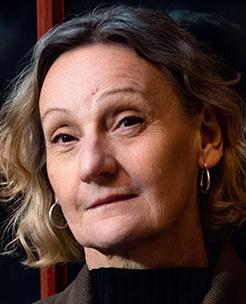
Foliage for Cello and Orchestra (2017) Dur: 9’ 2222-2100-01-str
Foliage was commissioned by the Turku Cello Competition as the mandatory work for its 2018 event. The solo part is a homage to the cello and its versatility as an instrument. It features both fragile, ethereal colours, as well as more muscular tones, and both poetic and playful gestures. A reduction is also available.
MATTHEW WHITTALL
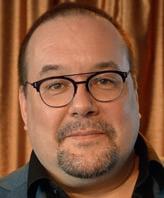
The heaven that dwells so deep –Concerto for Viola and Orchestra (2010) Dur: 34’ 3223-4231-didgeridoo-14-hp-pf-str
In this lovely work the viola part is predominantly lyrical rather than overtly virtuosic. The soloist ventures forth at the outset with a querying, searching melody and is echoed by the orchestra, weaving an enchanting landscape. A didgeridoo emerges at several points, grounding the viola with its primal sound. Towards the end, the soloist steps back, dissolving itself in the shimmering sounds of the orchestra.
HIGHLIGHTS 4/2021 7
REPERTOIRE TIPS Works for string soloists and orchestra
KALEVI AHO
Rejoicing of the Deep Waters (Syvien vesien juhla) (1995)
Dur: 10’ 3333-4331-11-str
This symphonic fantasy, inspired by his opera Before We Are All Drowned, is one of Aho’s most dramatically intense pieces for orchestra. The impassioned outer sections are characterized by the forceful statements from the brass, woodwind and strings while relief is presented in the middle part by the chorale sections.
,...Freezing Were the Restless Waters (1995-96)
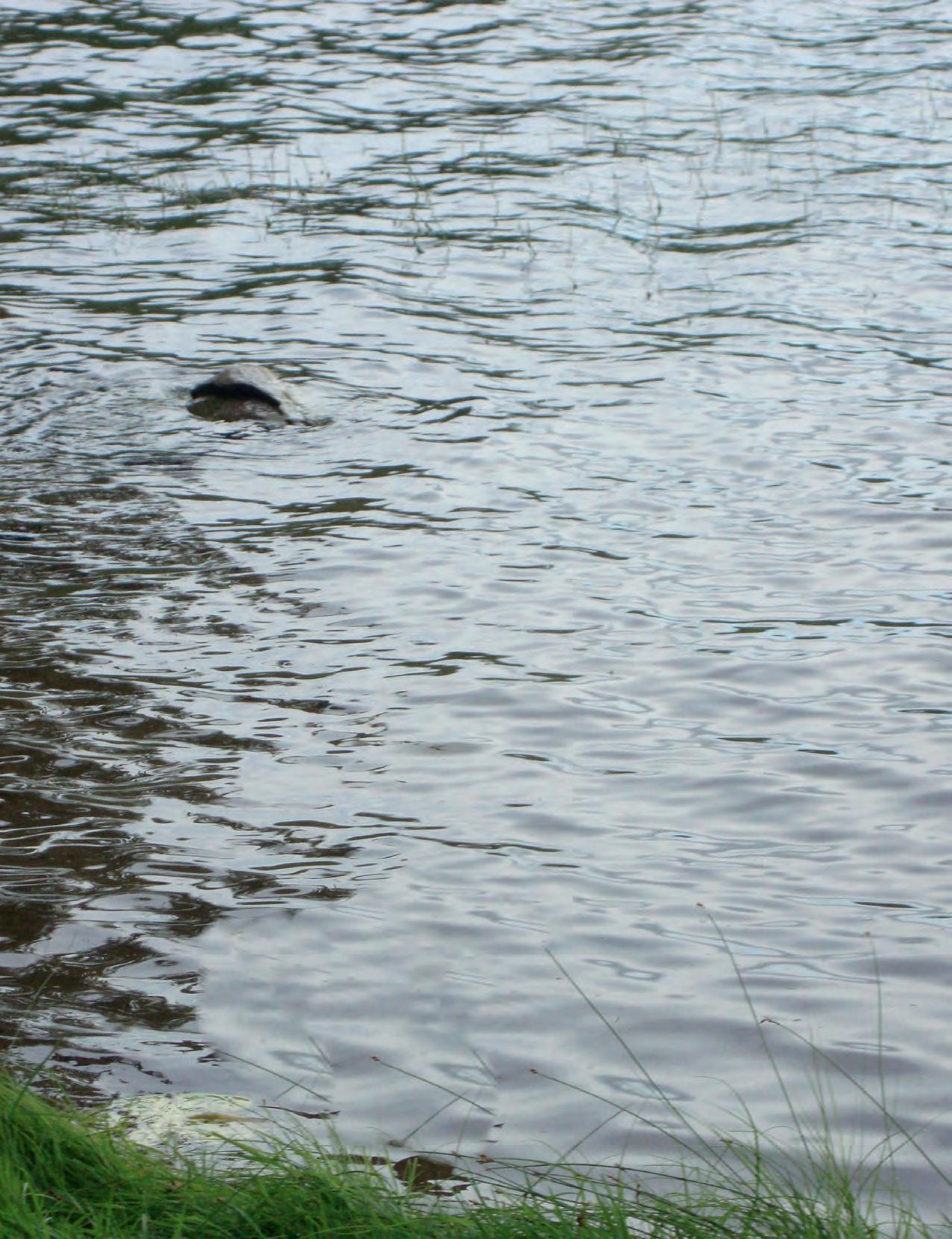
Dur: 9’ str
This is the first movement from Aho’s Chamber Symphony No. 3. It opens softly and mysteriously, with fascinating dialogues between numerous string sonorities and glissandi. Eventually an ominous rhythmic motive begins to consume the musical landscape; the movement ends, however, with a return to the opening texture.
HUGO ALFVÉN
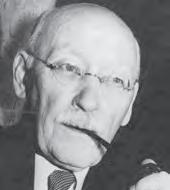
A Legend from the Skerries (En Skärgårdssägen) (1904)
Dur: 16’ 3344-4231-12-2hp-str
A symphonic tone poem describing the outskirts of the archipelago in a nocturnal atmosphere of autumn with glittering moonlight, with stormy weather, in dreamy tranquillity and in a life struggle – a depiction that simultaneously lets the nature images throughout offer an analogue to the dark bliss of human passion.
ERIK BERGMAN
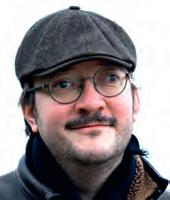
Musica Marina (1993-94)
Dur: 11’ str
This is music inspired by the sea and it is also a homage to the building of the ship Jacobstads Wapen that made its maiden voyage in 1994. The first movement generates an energy which permeates the whole work, except for the second movement, May Night, which conveys the atmosphere of a spring evening in the North. Here a solo cello makes its appearance – a solitary person’s meditation and emotions.
BOBBIE ERICSON/ ARR. ANDERS WAHLGREN
Outer Skerries (Utskärgård) (1962)
Dur: 3’ 2121-2330-11-hp-str
An undulating waltz-melody that brings to mind carefree, salt-sprinkled summer days with boat trips in the archipelago. Originally written for piano but often performed in this well-known arrangement for orchestra by Anders Wahlgren.
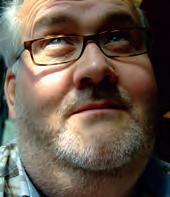
KIMMO HAKOLA

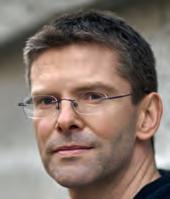
Maro (2006) Dur: 15’ 3333-4331-12-hp-pf-str OR 2222-2221-02-hp-pf-str
Maro was a commission from the Swedish Radio for the Baltic Sea Festival. Though a musical sea picture, it also takes a stand on the pollution of the Baltic Sea, about which Hakola is as concerned as he is by climate warming. The result is an orchestral epic of both beautiful sounds and fierce energy. Around the middle it rides waves of timbral webs and from there proceeds to an effec tive build-up.
UUNO KLAMI
Sea Pictures (Merikuvia) (1930-32) Dur: 22’ 2222-4231-11-hp-pf-str
Klami was called the impressionist of Finnish music and he was influenced by French and Spanish music. His use of melody is here at its most beautiful. The second movement, Captain Scrapuchinat, has some exotic de-Falla-like brushstrokes. The finale, 3 Bf, is the most popular movement, frequently played on its own, and it is often said to resemble
HELENA MUNKTELL
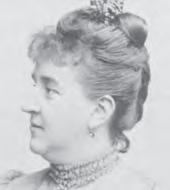
Breakers (Bränningar) (1895)
Dur: 12’ 3322-4231-12-1-str
A symphonic picture and a graphic depiction of the sea inspired by a sojourn on the Riviera in the early 1890s. The piece captures the turbulence of the sea and the unpredictability of the waves, with their continual fluc tuations of character and colour in the imaginative orchestral texture.
GUSTAF NORDQVIST
Till havs (At Sea) (1922) Dur: 3’ for high or medium voice and orchestra: 2222-2231-11-str
Text: Jonatan Reuter (Sw)
Nordqvist’s vivid setting of the Finland-Swedish poet Jonatan Reuter’s text is an impassioned homage to the sea. The piece came to be one of the Swedish star tenor Jussi Björling’s big showpieces.
GÖSTA NYSTROEM
Sinfonia del Mare (1947-48)
Dur: 37’ for soprano and orchestra: 3333-4331-12-hp-pf-cel-str
Text: Ebba Lindqvist (Sw/Eng/It/Fr/Ger)
Nystroem often used the sea as a source of inspiration in his impressionistically tinged music. His Third Symphony is dedicated to ”all the sailors upon the seven seas” and opens with quietly rumbling timpani and double basses, followed by a soft, billowing melody that brings to mind gentle swells. Violently whipped up waves take over in a rhythmically profiled allegro section. The central point of the symphony is the vocal lento movement, an extremely beautiful setting of Ebba Lindqvist’s poem ‘Det enda (The Only Thing)’, which concludes with the words ”all this I should gladly forsake for one breath of the wind from the sea.”
ANDERS PAULSSON
Coral Symphony – Kumulipo Reflec tions (2016) Dur: 17’ for Hawaiian chant (reciter) or baritone and orchestra: 3333-4231-14-hp-cel-str Text: Trad. (The Kumulipo)/transl. Martha Warren Beckwith (Eng)
This tone poem is based on the Hawaiian creation myth ‘Kumulipo’ that begins with the words: ”And born was the coral polyp…”. A Hawaiian Pahu drum sets a ceremonial rhythm that evokes the spirits of ancient Hawaii as the evolution of the species grows exponentially. The story is conveyed by a Hawaiian chant or is sung by a baritone, while the colourful orchestral attire creates images of the mighty sea, and above all the swarming life under its surface. The work is intended to be performed together with a coral reef slideshow
EINOJUHANI RAUTAVAARA

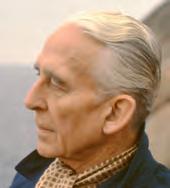


On the Last Frontier (Viimeisellä rajalla) (1998)
Dur: 24’
Fantasy for chorus (SATB) and orchestra: 3233-4331-12-hp-str Text: Rautavaara after Edgar Allan Poe (Eng)
This fantasy opens with a sumptuous, mysterious orchestral section.
Beautiful, shining flute and oboe solos against a choral background alternate with a sea of orchestral sound in stormy majesty. As the poem proceeds, the choir transports the listener on a mysterious voyage towards the horizons of the unknown.
Daughter of the Sea (Meren tytär) (1971) Dur: 17’
Concerto for soprano, mixed choir and orchestra: 3333-4331-12-hp-str Text: Phonetics
Rautavaara forbade the performance of this work after his divorce from his first wife, for whom it was composed, but later changed his mind. Written a year before the popular Cantus arcticus, it affords an exciting vista of his music in the early 1970s. It was born when Rautavaara was adapting his Violin Concerto as a concerto for soprano and entered it for a composition competition in which he shared the first prize with Aulis Sallinen.
ALBERT SCHNELZER
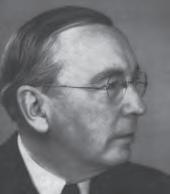
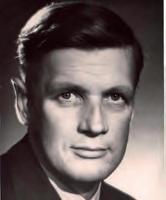
SALT (2020) Dur: 40’
Oratorio for soprano, baritone, mixed choir and symphony orchestra: 3333-4331-13-hp-pf/cel-str
Text: K. Boye, E. Södergran, M. Elmblad, D. Andersson (Sw)
The themes of this cantata are the sea, travel and migration. Here the sea can be something that is both full of promise and thrilling, but at the same time frightful. The soloists can be considered representatives for the above themes, the soprano as an image of the sea and the baritone soloist as a representative for mankind. All the texts have a connection with the sea and musically there are even some references to works such as La Mer by Debussy. The work was composed for the 400th anniversary of the city of Gothenburg in 2021.
BENJAMIN STAERN
En strimma hav (A Streak of the Sea) (2020) Dur: 10’ for choir, young players and orchestra: 2222-4231-13
Text: Edith Södergran (Sw)
This work, commissioned by El Sistema Sweden for their 10th anniversary, is inspired by Södergran’s poem ‘A Streak of the Sea’. The music is dramatic, expansive and filled with energy. It starts out calmly and quietly, but the waves grow increasingly stronger the farther into the work we come. The composer has also had climate change and the risk of future floods in mind. The work was written as part of the project ”Side by Side”, where musicians from professional symphony orchestras play together with the youngsters from El Sistema.
Ravel’s Bolero.
HIGHLIGHTS 2/2021 6 REPERTOIRE TIPS Music on the theme of sea and water
REPERTOIRE TIPS Works for smaller-sized
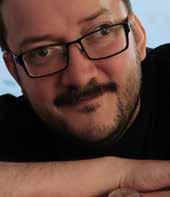


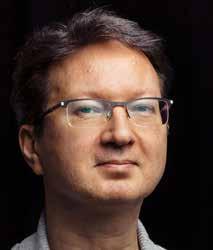
orchestra
Due to the current coronavirus restrictions many concert producers are asking for repertoire for smaller-sized orchestras. Here are some exciting pieces for chamber ensemble, chamber orchestra and string orchestra, some with a soloist. We have also included a few staff favourites – ones that have struck our fancy in performance or have left fond memories. You find more repertoire for smaller-sized orchestra listed on our web sites.
CHAMBER ENSEMBLE
JÖRGEN DAFGÅRD
Esprit (2012) Dur: 24’ 1111-1000-pf-str (11111)
The music in Dafgård’s constantly flowing Esprit, is fast throughout the piece. It has a swinging pulse and at times an almost jazzy feel. It starts lightly and playfully, but gradually the course of events gets more and more adventurous and filled with drama, to finally reach a euphoric ending.
KIRMO LINTINEN
Ballata Concertante
(2015–16) Dur: 12’ octet: 0011-1000-str (11111)
This is a vibrant piece intended for performance without a conductor. Lintinen’s ingenious stylistic allusions were triggered by the music of the Trecento, for Ballata Concertante speaks the language of the 14th century with a catchy “modernist twist”. The solo winds act like a vocal trio. The instruments are the same as in Schubert’s Octet, so the two works make good programme partners.
BENJAMIN STAERN
Bells and Waves (2010) Dur: 30’
11 instruments: 1121-0000-01-pf-str (10111)
An eventful chamber symphony in five movements, that seethes with life and energy. It is rhythmically complex and playful. At times one can imagine church bells in the distance and boats slowly gliding by in the fog. In the last movement the music gushes forth in a torrent of rapid toccata-like figures until it finally fades away and disappears into nothingness.
LOTTA WENNÄKOSKI
Hele (2018) Dur: 13’
12 players: 1111-1100-01-str (11111)
An energetic work in which, according to critics, Wennäkoski “utilized the slide whistle amid frantic and agile ensemble writing to sometimes atmospheric, sometimes cartoonish, but always surprising effect.” Hele was commissioned by the Los Angeles Philharmonic and Gustavo Dudamel. It is a rhythmically playful piece including some extraordinary instruments such as a typewriter.
CHAMBER / SINFONIETTA ORCHESTRA
DANIEL BÖRTZ
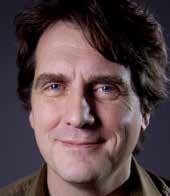
Sinfonia 11 (2006) Dur: 22’ 2222-2200-10-0-str
A markedly dramatic Sinfonia in four movements, in which fits of rage lurk even in the loveliest of passages. The middle movements vacillates between hope and despair while the outer movements are at the same time epic and concentrated.
MATS LARSSON GOTHE

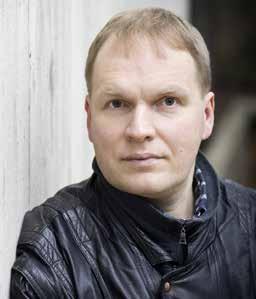
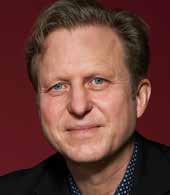
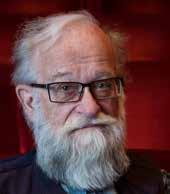
The Apotheosis of the Dance (2012) Dur: 10’ 2222-2200-11-str
Larsson Gothe’s ingenious companion piece to Beethoven’s 7th Symphony, begins with a bobbing, modulating, chromatic ascending motif. He then continues to reflect on themes from the symphony. The aim was to write a piece that could be listened to as a standalone composition, without prior knowledge of Beethoven’s work; but also that the experience would hopefully be enhanced still further if the listener was already familiar with the original symphony.
JYRKI LINJAMA

Allerheiligentag II (2009) Dur: 16’ 2222-2200-10-str
This symphonic meditation begins tenderly. The original Finnish folk chorale shimmers through the orchestral texture, at times more directly, at times more disguised. A lyrical work, it would be ideally suited together with Mozart’s or Faure’s Requiem. It was commissioned for a church concert held before All Saints’ Day in 2009. The timing of the premiere in relation to the church year influenced the work and its title.
MARIE SAMUELSSON

The Eros Effect and Solidarity (2016) Dur: 12’
2222-2200-01-str
Text: George N Katsiaficas Swe/Eng
In the third part of Samuelsson’s Love Trilogy the orchestra musicians get to play dual roles, as the music is intertwined with recitation of words from George N. Katsiaficas’ article ‘The Eros Effect’. The tranquil mood and delicacy permeates the whole work, including exquisite strings and wind parts.
ALBERT SCHNELZER
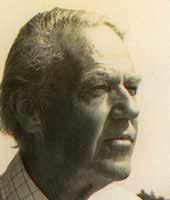
Burn My Letters – Remembering Clara (2019) Dur: 12’ 2222-2200-10-str
Schnelzer’s work, inspired by Clara Schumann’s letters to Johannes Brahms, is constructed as a dialogue between a wild and free flute (Clara) and a more thoughtful bassoon (Johannes). The music captures the energy of Clara’s hectic life as a touring musician. But there are also contrasting quiet and melancholy sections where the mother, the friend and the human being Clara, with her doubts, fears and sorrows shines through. Jointly commissioned by the Los Angeles CO, Gävle SO, RTE National SO and Sinfonia Lahti for Clara Schumann’s 200th anniversary.
BENJAMIN STAERN

Wave Movements (2011)
Dur: 11’ 2222-2200-11-0-str
Staern’s water-inspired opening piece is bubbling with energy. It drips, it ripples, it flows and it eddies. The waves roll and wash over one. And it all ends up in a magnificent climax.
JONAS VALFRIDSSON
John Bauer Overture (2019) Dur: 15’ 2222-2200-01-str
Valfridsson’s new overture has a magic shimmer and a scent of deep forests, with glittering brooks and shadowy lakes. Sometimes it is seductively beautiful, at other times almost threatening, but incessantly captivating. This is the third part of a trilogy of works inspired by the fairy-tale painter John Bauer.
ERLAND VON KOCH
Nordic Capriccio (1943) Dur: 6’ 2222-2210-10-str
Von Koch’s exuberant fantasy overture, inspired by a folk motif from Dalecarlia, opens with a “troll-drum” timpani solo which later returns linking the various sections together. It is a spectacular mixture of whirling dances and sweeping beautiful strings. A highly suggestive piece reminiscent of wide open landscapes as well as midsummer dancing.
STRING ORCHESTRA
KALEVI AHO
Letter to the Netherworld / Kirje tuolle puolen (2018) Dur: 12’ strings (55432)
Subtitled ‘Pehr Henrik Nordgren in memoriam’, this is a work dedicated to the memory of fellow-composer Nordgren. Letter to the Netherworld is a musical conversation in which the violins ask the low strings questions and the rich viola tones act as catalysts. The result is beautiful, moving music.
HIGHLIGHTS 3/2020
ANDERS ELIASSON

Ein schneller Blick…ein kurzes Aufscheinen (2003) Dur: 17’
This is a fine example of Eliasson’s exquisite string writing. The title is not a quote but a distinctive feature of the work. The music begins with a minimalist and frenetically repetitive rhythmical energy which is followed by a more melancholy ‘Tranquillo’ section. The concluding ‘Presto’ has an almost fiddler-like drive.
TOMMIE HAGLUND
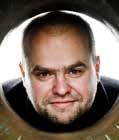
Serenata per Diotima (2014/15) Dur: 14’
An altogether delightful work that either opens your mind to the rest of the concert, allowing you to leave everyday life behind, and experience beauty in the present moment; or a work that gets you to make a landing at the end of the concert, and to go home with an intensity of feeling and an openness to the beautiful.
PAAVO HEININEN
Sinfonietta Op. 66i (1996/2000) Dur: 19’
Dance rhythms are strongly present throughout Heininen’s big opus 66, which is a treasure trove embracing several works for string or chamber orchestra. The Sinfonietta is in four movements (Sonata, Scherzo, Elegia and Ricercata), all waltzes. Together they trace a symphonic arch. Commissioned by the Lapland Chamber Orchestra.
MIKKO HEINIÖ
Minne (1996) Dur: 18’
Minne features both rhythmic fireworks and lyrical moments. It consists of three movements each different in character. Hovering in the background of Martellato are rhythm and blues; Cantabile is marked by expressive, singing polyphony and Animato is a quick, throbbing dance. Premiered by the Ostrobothnian Chamber Orchestra and Juha Kangas.
PEKKA JALKANEN
The Serf of Viro / Viron orja (1980) Dur: 6’30
two violins and strings (44321)
This work won an award in a competition seeking works using folk music in new ways. Jalkanen’s music has a mystical appeal, setting an old folk tune that runs like a hypnotic scarlet thread through the texture, which grows from a minimalist lightness towards dramatic moments executed using web technique.
MIHKEL KEREM
String Sextet ‘Restless Night’ (2004) Dur: 30’ string sextet or string orchestra
Kerem, himself a violinist, writes idiomatic and hauntingly beautiful music for strings. The idea of the String Sextet was connected to Schönberg’s Verklärte Nacht so that the two pieces could be performed together. The mood goes from calm to agitated and finds peace at the end with a long, meditative stretch in D major.
CARIN MALMLÖF-FORSSLING
Release (1973/93) Dur: 9’
Release was composed over a period of twenty years. It demonstrates that music can be both dramatically contemplative and restfully intense. The first movement from 1973, was supplemented in 1992 with an ‘Adagio funèbre’, composed after a personal loss. She then added a short and lighter ‘Allegro con spiriti’ to function as a bridge between the old Release work and the concluding elegy.
ROLF MARTINSSON
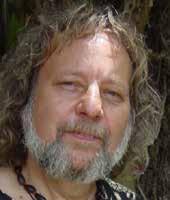

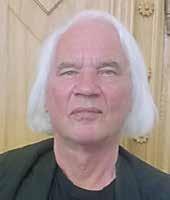
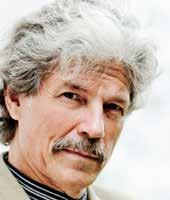

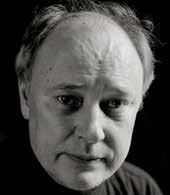
A. S. in Memoriam (1999/2001) Dur: 12’

Op 50a for 15 strings (54321) Op 50b for string orchestra
In his stunning tribute to Arnold Schoenberg and his masterpiece ‘Verklärte Nacht’, Martinsson has sought to mirror the vocabulary, gesture and musical characters present in Schoenberg’s works. The 49th bar quotes a moving passage from Verklärte Nacht, as a sounding acknowledgement of the work’s influence on A. S. in Memoriam.
JUHANI NUORVALA
Variationes ex “Bene quondam” (2017) Dur: 24’
Here are eight variations on Bene quondam dociles in the medieval Piae Cantiones collection. The solo viola binds the movements together and the theme passes through different eras, musical cultures and styles. Shifting rhythms, archaic tones, toe-curling sounds, beautiful flageolet notes and gamelan allusions, hints of tango and rock – all these can be found in this relaxed, enjoyable piece.
PEHR HENRIK NORDGREN
Transe-Choral (1985) Dur: 33’ 15 strings (54321)
A work in two broad sections, the idea being for the listener to mentally prepare for the second by listening to the silence after the first. Its painful chorale themes ultimately lead to a radiant, almost sacred, trance-like final motif.
VELI-MATTI PUUMALA
Rime (2013) Dur: 24’ strings (55432)
Quiet moments are often a mystical fundamental element of Puumala’s works. His music is crystal clear and breathtaking, and Rime alludes to the frosty autumn fields of Central Ostrobothnia. The thread running through it is a folk melody noted down by Toivo Kuula. This piece was premiered by the Ostrobothnian Chamber Orchestra.
EINOJUHANI RAUTAVAARA
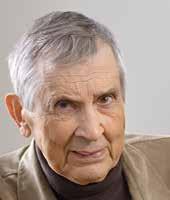
Divertimento (1953) Dur: 9’
The three-movement Divertimento is a youthful work by Rautavaara. In addition to its fresh, folk-song spirit and the influence of the Ostrobothnian folk music tradition, it bears echoes of Hungarian rhythms. Also suitable for student orchestras, it is now available in a revised edition.
HERMAN RECHBERGER
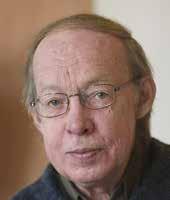
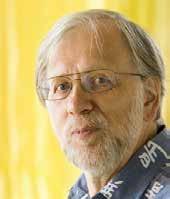
Polar Night / Kaamos (1972) Dur: 5’
Rechberger has often looked beyond Western culture, chiefly in the direction of Arabian music, but this piece turns towards Nordic myths and folk music. It opens mysteriously and proceeds in a burst of energy. The mood keeps changing, creating mystical visions, and effective glissandos precede a haunting violin solo in the middle section.
MARIE SAMUELSSON

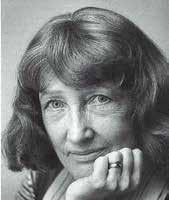
Five Seasons (2017) Dur: 12’ strings and sound file
Samuelsson’s elegiac comment on Vivaldi’s The Four Seasons, is composed for string orchestra with the viola and electronically processed sounds in the center. Poems from a collection by Mimmi Palm mark the start of each new part and season. The music is influenced by the sounds connected with climate change and global warming; more insects, more storms and more rain.
JEAN SIBELIUS
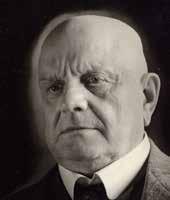
Music for the play The Lizard / Ödlan (1909) Dur: 20’ string ensemble
This incidental music shows Sibelius at his most enchanting, and he looked upon The Lizard as one of the most exquisite works he had ever written. The chromatic and wholenote motifs and mysterious string tremolos are a direct forerunner of Tapiola. According to Sibelius’s notes, the ideal instrumentation in this work is nine strings.
HIGHLIGHTS 3/2020
LILLE BROR SÖDERLUNDH
Three Folk Waltzes / Tre folkliga valser (1945)
Dur: 7’
“I have fond memories of Söderlundh’s lovely Three Folk Waltzes, which I played together with my orchestra at an outdoor concert in Lund. The spring breezes caused the note sheets to provide an accompaniment with their flapping. And the audience was all smiles listening to this folk tone infused string music, which well reflected the delight and the expectations for the summer that was in the air.”
VELJO TORMIS
Reminiscentia (1969/2009)
Dur: 41’
string/chamber orchestra: trp-2perc-str
Reminiscentia consists of choral works transcribed for string orchestra, however some of the five movements include additional instruments. They can be performed separately or in combination. Among them is the hypnotically primitive St. John’s Day Songs (Jaanilaulud). The sustained, singing melodies are ideally suited for strings. Rather than a suite as such, this is a sort of “rendezvous of reminiscences”.
ERKKI-SVEN TÜÜR

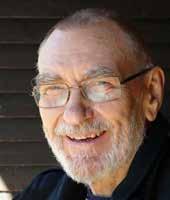
Action-Passion-Illusion (1994)
Dur: 15’
The rhythmically syncopated opening is indeed an action-packed start to this popular work with Passion, a beautiful, meditative middle movement, at its heart. It sets off in a low register on the double basses and cellos and gradually expands into a chorale-like, intensive outburst.
HARRI VUORI
To Fly, to Fly / Lentoon (2015)
Dur: 10’ 18 strings (44442)
This work pictures the polyphony of swans on the wing and the strange, mesmerising rhythm of their cry. The composer wrote: “In summer 2014, four swans landed on the lake by my summer cottage. My attention was immediately caught by their joint song using the first four notes of a major scale, at times slightly extending their melody up or down.” Sakari Oramo conducted the premiere in 2015.
SOLOIST(S) & STRING / CHAMBER ORCHESTRA
KALEVI AHO
Piano Concerto No. 2 (2001-02) Dur: 29’ piano and 20 strings (65432)
Aho’s artfully-constructed concerto is an irresistible combination of virtuosity and playfulness. The last of the three movements, with its suggestion of nursery rhymes, culminates in a take on Big Ben presented by the violas, weaving it into the jubilant counterpoint.
ANTTI AUVINEN
Breathe (2005) Dur: 11’ piano and strings (min. 54321)
Serene and introverted passages alternate with ones bursting with energy. Auvinen creates a host of delicious timbres, some of them requiring extended performance techniques. Breathe is like a beautiful painting that always has a little twist: an interval that causes distortion, a closely premeditated glissando or something else to sustain the listener’s interest. A work that leaves no one cold!
TOBIAS BROSTRÖM

Piano Concerto No. 1 – Belle époque (2010/11) Dur: 21’ piano and strings
Broström’s concerto is a nostalgic retrospect of an epoch long past, viewed in a modern light. You take your seat and the trip begins. Various rooms, milieux and landscapes pass by. They are chiseled out by the soloist and the orchestra, and burst into a wonderful rhythmic finale that carries you out into the evening.
ANDERS ELIASSON
Concerto per violin, viola ed orchestra da camera (2009) Dur: 25’ 0200-2000-00-str
This concerto is characterised by a rhythmic drive and a forceful pulse, where the soloists rush forth with Eliasson’s typical restless energy. There is only time for rest in the more melodic and infinitely beautiful middle movement. Jointly commissioned by the Ostrobothnian, Norwegian and Swedish Chamber Orchestras.
KIMMO HAKOLA
Kivi-laulut (Seven Songs to Texts by Aleksis Kivi (2007/2011) Dur: 27’ baritone and strings (hp-str) (other versions also available) Text: Aleksis Kivi (Fin)
“Listening to this work is like alternately enjoying salt and sugar. Delicious melodies follow one after the other: there are folk-like songs, defiant outbursts, heart-rending melancholy – all brilliantly interpreting Kivi’s most beautiful poems. The cycle ends with the woeful Song of my Heart that is like a hypnotic lullaby. But beware: the melodies will become lodged in your head on first hearing!”
INGVAR LIDHOM
Three Songs (1948) Dur: 10’ mezzo-soprano and strings Text: Hjalmar Gullberg and Lope de Vega (Sw)
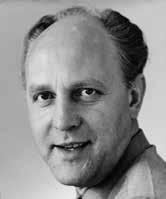
“When I got to know Ingvar Lidholm’s Three Songs at the Royal College of Music, I fell for them right off. His tone language is somehow harsh and warm at the same time. Since then I have sung them many times and above all listened to Anne Sofie von Otter, who sings them with that velvety voice of hers.”
ROLF MARTINSSON





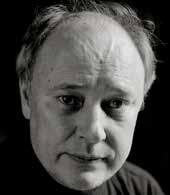


Golden Harmony – Soprano
Saxophone Concerto No. 1 (2012) Dur: 23’ 2222-2200-11-0-str
In this concerto Martinsson displays his gift for lyricism. The first two movements are characterised by beautiful and romantic melody lines, embedded in exquisite sonorities. Martinsson himself describes the orchestral garb as “a luxurious alloy of sound from the piccolo, muted strings and trumpets, stopped horns and a bowed vibraphone.” The third and last movement offers an energetic finale with breakneck virtuosity.
GÖSTA NYSTROEM
Sånger vid havet / Songs by the Sea (1942)
Dur: 14’ mezzo-soprano and orchestra: 1111-2100-11-hp-cel-str
Text: Ebba Lindqvist, Edith Södergran, Ragnar Jändel, Hjalmar Gullberg (Sw/Eng)
“There is a strong feeling of something fateful in Nystroem’s Songs by the Sea. The first leap of an octave with the text “A day shall come…”, and then the ethereal continuation that, as it were, meanders downwards, ”… when the wind is at a standstill. When the quaking-grass sings and the sun has set.” What an ingenious setting of Ebba Lindqvist’s text! The vocal contour, the timbre of the orchestra and the poetic visions are fused into an entity of divine geometry. These are five very expressive songs that one cannot help but love.”
ALBERT SCHNELZER
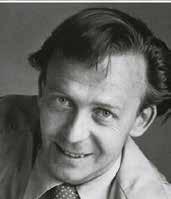
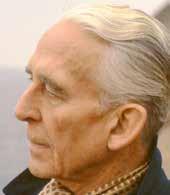
Cello Concerto – Crazy Diamond (2011) Dur: 23’ 2222-2200-11-pf/cel-str (version for chamber orchestra)
Schnelzer’s cello concerto is full of wondrous sonorities and lyrical, lengthy melodic lines, as well as his unmistakable rhythmic, dance-like motives. It is dramatic and expressive. The concerto concludes with an achingly beautiful song for the cello that lingers on after the music has fallen silent.
MATTHEW WHITTALL
Northlands (2009) Dur: 23’ Album for horn and strings (min. 55432)
Northlands is readily accessible with its direct beauty. It was influenced by Iceland’s epic landscapes and otherworldly light, which had had a powerful impact on the concept for the piece. The CD by Alba won the Record of the Year prize awarded by the Finnish Broadcasting Company in 2017.
VICTORIA YAGLING
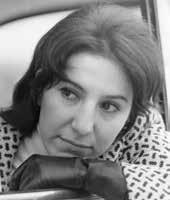
Suite for Cello and String Orchestra (1967) Dur: 15’
Melodic development, traditional handling of the orchestra and delicate, beautiful lyricism combined with passionate energy are Yagling’s true self. This Suite, an early work dating from 1967, has often been performed by the Helsinki Junior Strings, also on their foreign tours.
HIGHLIGHTS 3/2020
REPERTOIRE TIPS Works for
smaller-sized orchestra
REPERTOIRE
TIPS A selection of orchestral works

CECILIA DAMSTRÖM
Tundo! (2016/2018) Dur: 11’ 2222-4231-11-str Tundo is the Latin word for “knock”, and Cecilia Damström has used it as a metaphor for the refugee crisis of our time. The piece begins and ends with the entire orchestra knocking on the doorway to safety, with energetic semiquavers in FFF. In between, we are presented with clear images of the refugees’ journey through war, beautiful landscapes and the dangerous boat ride over heavy seas.
SOFIA GUBAIDULINA

Aus dem Stundenbuch (The Book of Hours) (1991)
Dur: 53’ cello, narrator, baritone, male chorus and orchestra: 4243-4242-14-2hp-zither-egtr-e-bgtr-cel.amp-hpd.pf-str Text: Rainer Maria Rilke (Ger)
Gubaidulina’s effective music opens towards the invisible. She has emphasised the ‘expression of vertical’, meaning a connection to the divine – a feature which the music reflects in, for example, the upward gliding strings. Aus dem Stundenbuch is a large-scale work of rich sonority and strong tensions combining the spiritual and dramatic. Gubaidulina is keen on setting philosophical and visionary texts such as this by Rilke.
MAIJA HYNNINEN
Incandescence – Concerto for Oboe (2016–17) Dur: 18’ oboe solo+2222-2221-02-hp-str or 2222-2200-02-str
This work was chosen for the list of recommended works in the IV International Uuno Klami Composition Competition. There are two versions, both scheduled to be premiered by two orchestras in Finland. Inspired by Virginia Woolf’s novel The Waves as well as scientific phenomena of incandescence, the concerto glows in different colours. The highly virtuosic solo part glimmers and glides over the fluctuating textures of the orchestra. The concerto builds a continuous arc of five movements, each portraying a different character and mood. In keeping with her personal style, Hynninen, skilfully weaves together elements of surprise and humour in this meticulously written work.
IDA MOBERG

Stillhet (Silence) Dur: 3’ string orchestra
This is a short, charming cradle song from Moberg’s opera The Light of Asia (Asiens ljus) which Lotta Wennäkoski used as a source of inspiration for her recent Of Footprints and Light. Moberg (1859–1947) was the first widely-educated Finnish female composer. She studied at the St. Petersburg Conservatory and later at the Royal Musical Academy in Dresden. Stillhet is also suitable for teaching purposes, such as for student orchestras.
TEBOGO MONNAKGOTLA
Un clin d’oeil (2018) Dur: 20’ baritone and orchestra: 2222-4231-121-str or 2222-2200-01-str
Three songs to texts (in French) by the Madagascan poet Jean-Joseph Rabearivelo. The first song, ‘Un clin d`oeil’, is about the transitoriness of life, the second, ‘Perle’, is a love poem from the poet to his daughter. The third song, ‘Dances’, describes an elderly woman who dances with a young woman, but who actually is one and the same person. The songs are melodically beautiful and expressive, embedded in an impressionistic and iridescent orchestral attire.
HELENA MUNKTELL

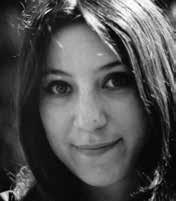
Bränningar (Breakers) (1895) Dur: 12’ 3322-4231-12-1-str
A symphonic picture and a graphic depiction of the sea inspired by a sojourn on the Riviera in the early 1890s. The piece captures the turbulence of the sea and the unpredictability of the waves, with their continual fluctuations of character and colour in the imaginative orchestral texture.
KARIN REHNQVIST



Arktis Arktis! (Arktis= The Arctic) (2000-2001)
Dur: 30’ 2222-2200-01-str
In this orchestral piece in four movements Karin Rehnqvist has been inspired by a journey with a Swedish expedition to the polar region. The first movement ”Breaking the Ice” depicts the expansive views, the horizons and the turbulence when the ice breaks. In the second movement ”Between Sky and Sea” the perspective changes to the details on the tundra and the intense glitter ”between space and sea”. It is followed by a short ”Interlude in the Dark”, a sudden drop in pressure and the mist envelops us. At last comes ”Yearning”. Rhythmical strings and upward runs in the winds lead to a jubilant song from within.
MARIE SAMUELSSON
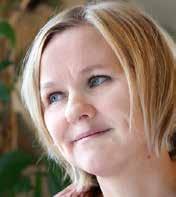
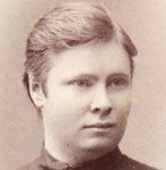

Bastet the Sun GoddessViolin Concerto (2004)
Dur: 20’ 2222-2220-03-0-str
A suggestive, exotic and sensual concerto inspired by the myth about the Egyptian goddess Bastet. The violin wanders about in different mood-creating soundscapes. The solo part often stays in the high registers of the violin. Radiant, bright flageolets contrast with oriental glissando motifs, rhythmical figurations and muffled double basses creates a magical atmosphere.
ANN-SOFI SÖDERQVIST
Movements (2017/18) Dur: 9’ 3333-4331-13-1-str
A striking and touching concert opener, reflecting on movements over time with extreme and polarising ideas, on refugees and nature’s ever more powerful movements in the form of weather extremes, etc. The work begins with a lone, slightly sorrowful trumpet that plays an important role throughout the piece. The music fluctuates between the agitated and the more contemplative, between beautiful shimmering sonorities and impetuous rhythmical sections. That Söderqvist is herself a trumpet player and has one foot in jazz is obvious from both the harmony and the rhythm.
JENNAH VAINIO
Beatbox Concerto ‘Fujiko’s Fairy Tale’ (2009-2010) Dur: 20’ beatboxer and string orchestra (min. 43221)
This work is an exciting voyage through mythology depicted in Japanese manga/anime art, where dragons, ghost-cats and magical super beings rule the reality. It is possible to detect in Vainio’s music oriental influences combined with hip-hop and dance beats and more traditional contemporary concert music with a hint of videogame soundscapes.
LOTTA WENNÄKOSKI
Jong (2013) Dur: 18’ Music for juggler (opt.) and chamber orchestra: 1111-1000-00-str (43321)
“What? A piece for orchestra with a juggler as the soloist?” wondered Wennäkoski on receiving a commission for Jong, but she soon warmed to the idea. “The trajectory of a ball when thrown is in itself already a brilliant musical gesture. And the musicians could shout all sorts of encouragement at the juggler.” The first of the three Jong movements is characterised by an ostinato violin-row motif around which the other instruments play and spurt. In the middle movement, the soloist has most room, and the end builds up a real feeling of happening. The work can also be performed without a juggler.
VICTORIA YAGLING

Concerto for Cello and Orchestra No. 2 (1984)
Dur: 23’ 3222-4231-11-hp-str
Yagling’s cello concertos are works of virtuosic brilliance and violent outbursts but also of a melancholy emotional charge that strikes straight to the heart. The slow movements of both well reflect the lyrical side of her music. The beauty is often tinged with a certain mournfulness and a striving towards unfamiliar paths reaching out into new realms. Victoria Yagling has written three cello concertos in all.
HIGHLIGHTS 2/2020
8
ENSEMBLE STRING ORCHESTRA
KIMMO HAKOLA
Chamber Concerto (2001) Dur: 32’ for 11 players: 1110-0100-01-pf-str (11111 or str.orch)
In this work each member of the ensemble is a soloist telling his own story. The moods vary from the opening Furioso to Amoroso – a love story – to Forza. Con fuoco, which proceeds with resolute energy. The finale, Misterioso, is music about grief but more a hymn of praise to the continuity of life and eternity. The concerto was
OLLI KORTEKANGAS
Triptych for Seven / Triptyykki seitsemälle (2008) Dur: 12’ cl-hn-tbn-pf-hp-2vc
Triptych was part of a commission project in which ten composers and artists were invited to present their interpretations of the Finnish national epic, The Kalevala. The three movements (Uhma, Harha and Tahto) possibly refer to events in the story – the heroes’ mutual blustering, the drifting on the waves, and the forging of the Sampo – but also to emotional states, desires, charms: erotic longing and fantasy.
MAGNUS LINDBERG

Zona (1983) Dur: 17’
for cello and ensemble: afl-bcl-perchp-pf-vln-db
Zona represents early Lindberg. The name comes from Andrei Tarkovsky’s film Stalker, in which the main character leads his clients to a site known as The Zone. The music begins as a high shimmer from which the cello gradually emerges as soloist. The cello part is extremely virtuosic, covering a wide spectrum of timbres and testing the very limits of expression.
TIINA MYLLÄRINEN

Squarcio (2011) Dur: 8’ fl -ob-cl-trp-trb-pf-vln1-vln2-vla-vlc-cb
Squarcio has the explosive energy typical of Myllärinen’s music and grows in overlapping crescendos. It may be divided into two parts, the expansive first leading to a denser, more layered second. The music is marked off by strong, polyrhythmic eruptions and ever-denser crescendos that carry the piece to its close. There is, however, one more surprise in store just before the final build-up.
KARIN REHNQVIST
Bloodhoof (2019) Dur: 42’
Monodrama for mezzo-soprano and 8 instruments: fl-ob-cl-perc-pf-vl-vla-vcl
The point of departure for the work is Ger∂ur Kristný’s poetic tale Bloodhoof about power, threats and assault. Rehnqvist’s sound world moves from inarticulate bestial sounds and gurgling to loud songlike cries and subtle ornaments. She uses the instruments in order to bring out the dramatic element. From thin, bubbling metal plates imitating water surfaces, to gongs that sound like clattering hooves.
ANDERS ELIASSON
Sinfonia per archi (2001)
Dur: 35’
The sorrowfully singing Sinfonia per archi consists of a long continuous movement that ranges from the most delicate tenderness and achingly beautiful melodic lines, to dramatic outbursts. A twenty-minute-long opening Adagio turns into a restless, slightly jerky and onrushing Allegro that leads to a Lento, in which the character of the beginning returns. The work ends on a bright, pure, open chord that imparts a feeling of release and hope.
EINAR ENGLUND
Serenata (1983) Dur: 20’ str (min. 44321)
This four-movement Serenade begins with a romantically-tinged Allegretto outburst. It also has some darker shades, as in the mournful Andante movement evocative of Shostakovich. A solo violin gets to play the dancing main theme in the third, Minuet, movement, and the finale (Allegro con brio) is boisterous and action-packed.
HALVOR HAUG
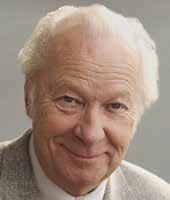
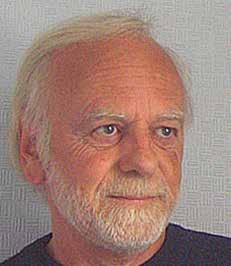

Furuenes Sang / Song of the Pines (1987)
This deeply expressive work reflects the desperation Haug experienced when the pine forest outside his studio was cut down. And one cannot help but be affected by the music that conveys both sorrow and indignation. ”Mankind lacks respect for and knowledge about the forest’s existential importance for life on earth”, says Haug. ”It is the pine trees ‘on their last legs’ that make up the idea behind the work.”
JOONAS KOKKONEN Music for String Orchestra
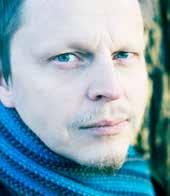


(1957) Dur: 28’
Kokkonen’s early work reveals his skill at writing for strings and marked his breakthrough as a major orchestral composer. The two fast, rhythmical movements form contrasts to the slow ones. The Adagio religioso is peaceful and beautiful, and the score at this point has great intensity. The structure is tied firmly together in a symphonic arch.
TIMO-JUHANI KYLLÖNEN
Awakening (1991) Dur: 17’ Kyllönen developed this work from his one-movement string quartet commissioned for the Kuhmo Chamber Music Festival. The title refers to the awakening of nature in spring and birdsong at dawn. Melody plays an important role in supporting the idea of a continuous stream or flow, while harmony and polyphony are used colouristically and as elements promoting formal unity.
ROLF MARTINSSON
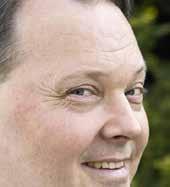
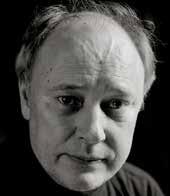
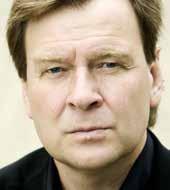

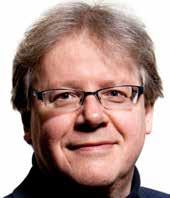
Kalliope (2003) Dur 27’
In the nine-movement work Martinsson lets the Muses of Greek mythology come forth, each in a movement of her own. The movements are divided into three groups of three so that the tempi and the Muses’ different characters are contrasted and varied as much as possible throughout the work. The characters fluctuate between the harsh and the more romantic, between tranquillity and rhythmic tension.
JUHANI NUORVALA
Sinfonietta (1997/98)
Dur: 19’
This is a string-orchestra version of Nuorvala’s Second String Quartet. The opening Andante movement at times creates a romantically soaring world of sound. The dreamlike Tranquillo leads to a dancing closing movement bursting with life and drive. A Tapiola Sinfonietta commission premiered in 1998.
VELI-MATTI PUUMALA
Memorial Fragment (2008) Dur: 13’
violin obligato and strings (54432) This work quotes a piece by Pehr Henrik Nordgren that engages in dialogue with Puumala’s own idiom. The violin obligato at times acquires sacral tones, as in Nordgren’s Portraits of Country Fiddlers. At the premiere the orchestra was scattered around Kaustinen Church and the leader moved from one section to another.
EINOJUHANI RAUTAVAARA

Cantos I-IV (1960-92)
Canto I (1960) 6’
Canto II (1960) 8’
Canto III ‘A Portrait of the Artist at a Certain Moment’ (1972) 9’ Canto IV (1992) 17’
The title is from Ezra Pound’s poem cycle for which Rautavaara wanted to create a musical parallel reflecting its multi-layered nature, varied references and allusions. But these are essentially personal statements, described as one-movement symphonies in conception, growing and branching organically like trees.
AULIS SALLINEN

Aspects of Peltoniemi Hintrik’s Funeral March (1969)
Dur: 13’
This is the orchestra version of Sallinen’s popular third string quartet. The intriguing title refers to a beloved Finnish fiddler tune. It is heard at the beginning of the work and later in a variety of settings through variation techniques giving the work the character of a modern chaconne. Sallinen spices it with his own wit and skilful handling of violinistic timbral gestures.
commissioned by Present Music for a premiere in Milwaukee and recorded by Innova Records.
HIGHLIGHTS 4/2020 6 REPERTOIRE TIPS
Works
for smaller-sized orchestra
MARIE SAMUELSSON


Rotations (1997/2003)
Dur: 14’
The sound idea of Rotations was born when Samuelsson was composing in her country house. The rain was pouring down onto her tin roof, so heavily that it flowed into her music. She could not concentrate on anything else but that dripping sound which is presented in the work right from the start: pizzicato-dripping strings in the high registers that play percussive counter-rhythms.
ALBERT SCHNELZER
Emperor Akbar (2010/2018)
Dur: 12’
string or chamber orchestra: 22222200-10-str
As always Schnelzer gives the listener an imaginative experience. The work has been inspired by the complex character of Akbar the Great and starts brutally with the Emperor chopping the head off a young rebel, after which rhythmical and violent passages alternate with more contemplative and serene scenes. Originally composed for the Brodsky Quartet, Schnelzer later orchestrated the work in versions for string and chamber orchestra.
JEAN SIBELIUS

The Countess’s Portrait / Grevinnans konterfej (1906)
Dur: 4’ recitation (opt) and string orchestra
Composed on the initiative of a Ladies’ Association for a soirée in Vaasa, Finland, this exquisite and beautiful piece is a melodrama that can be performed with or without recitation. The text, based on a literary work by Anna Maria Lenngren, adds to the tranquil, delicate mood created by the strings.
DAG WIRÉN
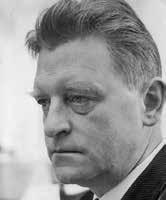
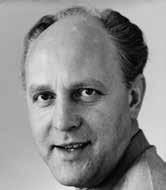
Serenade for Strings (1937)
Dur: 16’
In Wirén’s popular string serenade the lively music moves forward with a light step and in excellent spirits. The colors, detail and depth fabricated from the string orchestra are vibrant and fresh. The effervescent and jolly main theme of the fourth movement, ‘Marcia’, was used as the theme melody of the BBC arts programme Monitor in the 60s after which its popularity spread. The Serenade is still one of the most frequently performed Swedish orchestral pieces internationally.
CHAMBER / SINFONIETTA ORCHESTRA
TOBIAS BROSTRÖM

Beatnik (2015) Dur: 4’ version for small orchestra: 2222-2100-01-pf(opt)-str
This is a piece with an urban attitude, bursting with energy and vivacity. It is fast, and rhythmic, continually alternating between 5/8, 3/4 and 7/8 time. Originally written as a virtuosic encore piece (”Sputnik”) for trumpeter Håkan Hardenberger, Broström was later asked to prepare a version solely for orchestra (”Beatnik”), which now exists in versions for large and small orchestra.
HALVOR HAUG
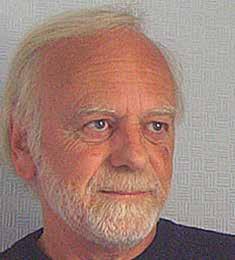
Insignia (1993) Dur: 15’ 2222-2200-10-0-str
Haug composed Insignia after his first visit to Lofoten, a group of islands off the northern coast of Norway, where the magnificent scenery inspired him tremendously. The work has the subtitle “Symphonic Vision for Chamber Orchestra” and the somewhat harsh tonal language and the drama in the music produces images of the rugged landscape.
OLLI KOSKELIN
...Like a Planet Silently Breathing (1992-93) Dur: 14’ 2221-2000-01-str
A rich, transparent texture, hypnotic string effects and rhythmically static music that from time to time soars to cosmic heights. As fellow-composer Juhani Nuorvala puts it: “A fragile, chorale-like string texture, wistful solo songs, gushing arpeggios mounting to ecstasy, and the slow pacing of the vibraphone are distinctive features of this piece.”
MATS LARSSON GOTHE
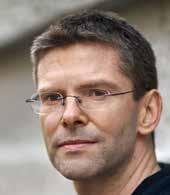



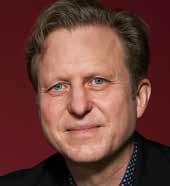
The Autumn Diary (2013-14) Dur: 21’ 2222-2200-01-str
In Larsson Gothe’s musical diary some days are serene and harmonious, while others are dramatic and chaotic. There are sleepless nights where the tempo slows down, and the music becomes contemplative. A beautiful Lamento towards the end of the work, lends peace of mind, if only for a short while. The work ends with “extremely expressive” and agitated high strings pitted against dark bassoons and a dry, rumbling timpani.
INGVAR LIDHOLM
Toccata e canto (1944) Dur: 13’ 1111-0000-00-str
At the age of 23 Lidholm made his orchestral debut with the Nordic-romantic Toccata e canto, a work that has retained its place in the repertoire over the years. The ‘Toccata’ has its share of objective modernism whereas the ‘Canto’ is an intimate and expressive, folk-tone coloured song. However, modernistic tendencies can be seen even here, in among other things the technique of letting the music progress in steps towards a climax, supported by powerful ostinato basses, after which the music fades away.
ALBERT SCHNELZER
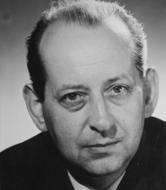
A Freak in Burbank (2008)
Dur: 10’ 2222-2200-11-str
Albert Schnelzer conjures up a magical world where whirling woodwinds and energetic, pressing strings succeed one another. A witty, lavishly orchestrated and highly imaginative piece inspired by a biography about film director Tim Burton, that has been performed some 70 times by orchestras around the world.
MIRJAM TALLY

Lament (2013) Dur: 10’ 2222-1111-12-0-str
Lament was composed as a companion piece to Beethoven’s Ninth Symphony. Tally uses a lyrical cello recitative from the IV movement and repeats it in her work to such an extent that it almost becomes a kind of mantra. It is mixed with typical Tally elements as clusters, airy whispering sounds and overtone glissandi. An unobtrusive but exquisite salute to Beethoven.
EDUARD TUBIN
Symphony No. 7 (1958)
Dur: 24’ 2222-2200-10-0-str
Tubin’s Seventh Symphony, is different in character from his other symphonies, not only because of the smaller orchestra but the tone language is also more acerbic and agitating. The tension is kept throughout the symphony, from the searching and energetic first movement, the middle movement’s lovely but bittersweet melodies, to the march-like finale that builds up a sense of terror, emphasized in its forceful closing bars.
JENNAH VAINIO
Winterborn (2008) Dur: 12’ 1111-1000-str
As is often the case in Vainio’s music, this wild piece carries hints of metal music, a serene and earnest ambiance, and rhythmic oriental harmonies. A commission from the Zagros Ensemble and Petri Komulainen, Winterborn travels through cold, winter landscapes from dawn to moonlit darkness.
JONAS VALFRIDSSON
The Only Thing that You Keep Changing is Your Name (2009)
Dur: 12’ 2222-2200-11-0-str
The work is based on a simple motif consisting of a descending minor third followed by a minor second, and it recurs throughout the whole work in different variations. Valfridsson mixes the simple motif with a more ambiguous and complex orchestral texture, effervescent instrumentation and compact sonorities. Altogether it creates a mysterious and thrilling atmosphere. Winner of the Uppsala Composition Competition 2010.
HIGHLIGHTS 4/2020 7
SOLOISTS AND ORCHESTRA
KALEVI AHO
Viola Concerto (2006)
Dur: 22’ 1111-1000-01 Kalevi Aho’s Viola Concerto is part of a set of three works he composed for the Lapland Chamber Orchestra and John Storgårds. Violent and infinitely charged, it traces a concentrated, one-movement arch softened by a rocking, cradle-song-like Allegretto before a solo cadenza.

ERIK BERGMAN

Concerto for Cello and Orchestra (1998) Dur: 15’ 0001-0000-str, bullroarer
This intensive Bergman concerto is a product of his late period. Its breath-taking progress is interrupted by a magical interlude for bullroarer – possibly an instrument he picked up on his travels around the world in 1998.
TOBIAS BROSTRÖM
Cello Concerto No. 1 (2011)
Dur: 21’ 2222-2200-10-str
The concerto opens suggestively and slowly with repetitive chords in the orchestra, forming the harmonic basis that is expanded gradually. The solo cello’s pentatonic motif develops from out of the orchestra’s carpet of sound, a motif that recurs throughout the entire work. Brisk sections with more temperament and rhythmic accents alternate with parts that are linked to the harmonies and motif of the beginning. The end is a slow diminuendo that fades away far off in the distance.
DANIEL BÖRTZ

Trumpet Concerto – Songs and Dances (1994-95)
Dur: 27´ 2222-2000-11-0-str
Songs and Dances is the first in Börtz’s tetralogy of solo concertos in which the word “songs” is included in the title. And it is obvious how Börtz lets the trumpet sing with expressive melancholy and beauty, not least in the final movement’s opening ‘quasi cadenza’ on muted trumpet. But there are also sections dominated by primitivistic rhythms and dance.
ANDERS ELIASSON
Concerto per corno ed archi –Farfalle e ferro (1991)
Dur: 21’
horn and string orchestra
The subtitle of this horn concerto, Farfalle e ferro (Butterflies and Iron), describes the two opposing characters of the music – the opening’s powerful, hammering horn part that rushes on with choppy chromatic motifs, and the conclusion’s quick, light, softly swirling butterfly music. In-between is a beautiful and melancholy cantilena.
MIKKO HEINIÖ
Syyskesän laulu (Late Summer Song) (2008) Dur: 17’ baritone (or bass or mezzo-soprano) and orchestra: 2222-2200-01-str Text: Lassi Nummi (Fin)
A vocalist’s dream: lyrical expression combined with beautiful, elastic orchestration and Nummi’s tender texts. The sensitive, impressionistic mood is airy and heedful throughout. This is music with subtle gestures, and everything in the score is carefully thought-out and weighty.
FREDRIK HÖGBERG

Dancing with Silent Purpose (2008) Dur: 11’ clarinet, string orchestra and backtrack (optional projections)
This clarinet concerto was composed in close collaboration with Martin Fröst and is an attempt to develop the classical concert format. The pre-recorded backtrack is integrated into the orchestral web providing intensive rhythms and suggestive atmospheres. And the music really swings!
LARS KARLSSON
Sju sånger till text av Pär Lagerkvist (Seven Songs to text by Pär Lagerkvist) (2010-11) Dur: 29’ baritone and chamber orchestra: 1111-1000-str (43321)
Swedish Nobel Prize laureate Pär Lagerkvist has been Karlsson’s favourite author due to the singing quality of his poems and the profoundly spiritual subjects. The cycle has as its starting point the existential anxiety of youth, while it ends with maturity encountering the longed-for light after an eventful journey through life. Recorded by BIS.

ROLF MARTINSSON


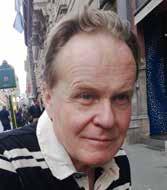


Violin Concerto No. 1 (2007)
Dur: 28’ 2222-2200-01-str
An incredibly persuasive piece with ecstatic lines, supported by a warm and rich orchestration. It has a superb sense of structure to send us on a journey which, particularly in the central section of the work, has a strong meditative power, but which has such a vivid landscape of colour, particularly toward the madly accelerating ending, that always grips the listener and performer.
KAI NIEMINEN
La Serenissima (2006)
Dur: 20’ Concerto for viola, harp and 12 strings (43221)
The influence of Monteverdi hovers in the background – Nieminen wants the old to be heard in his music alongside the new. The borders between the movements have been faded out so that they glide into each other and transform. The melody is also submerged in the harmony. La Serenissima is steeped in the mystery of the waves that rock it, and bells are part of its soundscape.
SVEN-DAVID SANDSTRÖM
Cello Concerto (1988)
Dur: 28’ 2222-2220-11-str
Sandström has called his cello concerto “an autobiographical diary”.

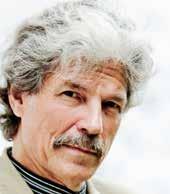

The form is somewhat rhapsodic and consists of thirteen short sections, “emotional pages of my life”, in which we find both sentimentality and playfulness. He lets the romanticism burst into full blossom but combines this with modernistic outbursts. The concerto concludes with a long drawn-out, varied allusion to the hymn ‘Nearer, My God, to Thee´.
BENJAMIN STAERN
Surprise! (2015) Dur: 15’
Concertino for trumpet and small orchestra: 2222-2000-01-hp-strings Surprise! is a lyrical concertino in three movements with melody in focus and a relatively transparent orchestration. It starts off with an introduction and a virtuosic Fantasia. In the second movement, Aria, the trumpet gets to sing beautifully, while the final movement is a clearly humorous and playful Scherzo where the soloist gets a chance to show off.
MATTHEW WHITTALL

Five Windows on Winter (2018) Dur: 23’ Concerto for chromatic kantele and string orchestra (min. 33221)
A piece inspired by Adam Gopnik’s essay collection Winter: Five Windows on the Season. Whittall let sound images flow and gathered the resulting visions into a whole. This is not so much a concerto as a suite, casting the kantele in many different lights as well as constantly varying its relationship to the orchestra that provides the “scenery”. The last movement is a bittersweet elegy for the end of winter. It is also a quiet requiem in our current time, bearing witness to climate change.
LOTTA WENNÄKOSKI
Susurrus (2016) Dur: 15’ guitar and orchestra: 2222-2200-01-str
This is a cheerful work, both frankly lyrical and even humorous. At times the soloist’s ‘instrument’ is a plastic ruler with which it conjures up magical effects. The violinists lower their instruments and pretend they are a strumming guitar band as they begin the most beautiful episode. The communal beat guarantees both swing and fun for players and audience alike.
HIGHLIGHTS 4/2020
8 REPERTOIRE TIPS Works
for smaller-sized orchestra
REPERTOIRE TIPS
KALEVI AHO
Letter to the Netherworld/Kirje tuolle puolen’ (2018) Dur: 12’
Pehr Henrik Nordgren in memoriam for strings 55432

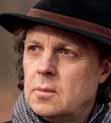
Dedicated to the memory of fellow-composer Nordgren, Letter to the Netherworld is a musical question-and-answer in which the violins put questions to the low strings and the rich viola tones act as catalysts. The result is beautiful, moving music.
TOBIAS BROSTRÖM

Mirage (2013/2016) Dur: 5’
Mirage is an arrangement for string orchestra of a movement from Broström’s String Quartet No. 1. The opening trills of the violins against the natural overtones in the viola and cello give the piece a magical, shimmering character, like a vibrating light over the horizon – like a mirage. The violins’ trills then change into a whirling rhythmical accompaniment. The melodic element is found throughout the piece in the viola and the cello. The music is continually in motion and doesn’t come to a stop until the very end, when it ebbs away and concludes in a quiet pizzicato.
CECILIA DAMSTRÖM
Infirmus (2015) Dur: 7’
Infirmus is the Latin word for ill or weak, and this piece is dedicated to all those who suffer from chronic illnesses. And one can indeed feel the pain in Damström’s striking piece, which is full of glissandi, achingly high strings, rapid runs and playing ”sul ponticello”. In this piece we can also find a quotation from her earlier choral composition on the theme ”My God, My God, why hast Thou forsaken me”?
ANDERS ELIASSON

Sinfonia per archi (2001) Dur: 35’
The sorrowfully singing Sinfonia per archi consists of a long continuous movement that ranges from the most delicate tenderness and achingly beautiful melodic lines, to dramatic outbursts. A twenty-minute-long opening Adagio turns into a restless, slightly jerky and onrushing Allegro that leads to a Lento, in which the character of the beginning returns. The work ends on a bright, pure, open chord that imparts a feeling of release and hope.
TOMMIE HAGLUND


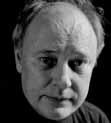

Serenata per Diotima (2014/2015) Dur: 14’
Serenata per Diotima is dedicated to Haglund’s first grandchild. He has told how looking into the little girl’s eyes inspired him while composing. The music is characterised by an uncanny beauty, emotional directness and intimacy. There is a melancholy shimmer over the fluid string texture. And here there are also recurrent lyrical, cantabile and dizzyingly beautiful interjections from a solo violin.
21th century works for strings
MIHKEL KEREM

String Sextet ‘Restless Night’ (2004) Dur: 30’
Laudatio (2011) Dur: 10’
“Anyone who believes traditional tonality to be no longer capable of expressing anything more than timeworn clichés should listen to Kerem’s work,” wrote Fanfare. Kerem, himself a violinist, has written idiomatic and hauntingly beautiful music for strings. The idea of the String Sextet was connected to Schönberg’s Verklärte Nacht so that the two pieces could be performed together. The mood goes from calm to agitated and finds peace at the end with a long, meditative stretch in D Major.
ROLF MARTINSSON
Kalliope (2003) Dur 27’
In the highly expressive nine-movement work Kalliope, Martinsson lets the Muses of Greek mythology come forth, each in a movement of her own. The movements are divided into three groups of three so that the tempi and the Muses’ different characters are contrasted and varied as much as possible throughout the work. The characters fluctuate between the harsh and the more romantic, between tranquility and rhythmic tension.
JUHANI NUORVALA
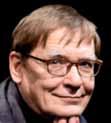
Varationes ex “Bene quondam” (2017) Dur: 24’
Eight variations on Bene quondam dociles in the medieval Piae Cantiones collection. The solo viola binds the movements together and the theme passes through different eras, musical cultures and styles. Here again Nuorvala handles his material with real skill. Shifting rhythms, archaic tones, toe-curling sounds, beautiful flageolet notes and gamelan allusions, hints of tango and rock – all these can be found in this relaxed, enjoyable piece.
VELIMATTI
PUUMALA
Rime (2013) Dur: 24’ for strings 55432
Memorial Fragment (2008) Dur: 13’ for violin obligato and strings 54432
Like many of these ‘tips’, both pieces were premiered by the Ostrobothnian Chamber Orchestra. Rime alludes to the frosty autumn fields of Central Ostrobothnia. The thread running through is a folk melody noted down by Toivo Kuula. The Memorial Fragment is subtitled “In memory of P.H. Nordgren” and quotes a piece by him that engages in dialogue with Puumala’s own idiom. Breathtaking, quiet moments are often a mystical fundamental element of Puumala’s works.
HARRI VUORI
To Fly, to Fly / Lentoon (2015) Dur: 10’ for 18 strings 44442
Sakari Oramo conducted the premiere of this work in 2015.
It pictures the polyphony of swans on the wing: The composer wrote: “In summer 2014, four swans landed on the lake by my summer cottage. My attention was immediately caught by their joint song using the first four notes of a major scale, at times slightly extending their melody up or down. I was also impressed by the strange hypnotic rhythm of their singing.”
HIGHLIGHTS 2/2019
REPERTOIRE TIPS
Solo concertos for brass instruments
KALEVI AHO
Concerto for Tuba and Orchestra (2001) Dur: 29’ 3333-4.barhn.330-11-hp-str
Concerto for Contrabassoon and Orchestra (2004) Dur: 37’ 2222-3221-12-pf/cel-str
Concerto for Trombone and Orchestra (2010) Dur: 30’ 2222-3201-baritono-03-hp-str

Concerto for Horn and Orchestra (2011) Dur: 27’ 1111-1000-01-str
The Aho concertos offer enormous potential for some more unusual instruments to shine. His aim has been to place them on a par with any of the others for more commonly featured soloists and to make maximum use of their instrument’s expressive potential.


TOBIAS BROSTRÖM
Lucernaris – Concerto for Trumpet, Live Electronics and Orchestra (2009) Dur: 30’ 2222-4231-12-pf/cel-str
Lucernaris can be described as a wandering from darkness towards light. The first part of the concerto is opening on the flugelhorn, and ending with a very effective section where the soloist plays against himself in a rhythmic pre-recorded loop, building up a huge climax which leads over to a short live-electronic interlude. In the second part it starts to lighten up and like a shimmer comes over the orchestra. The work concludes with a beautiful chorale-like section where the soloist leaves the stage, and in the very end we hear the muted trumpet playing in the distance.
Sputnik (2016) Dur: 5’ piccolo trumpet solo+3233-4331-03-0-pf-str (or string orchestra)
This rhythmically lilting encore piece for piccolo trumpet is like a little firework ascending towards the sky, where it fizzles and roars and reaches stratospheric heights. Written for Håkan Hardenberger for the inauguration of the concert hall Malmö Live, it has also been performed at the BBC Proms.
ANDERS ELIASSON

Concerto per Corno ed archi – Farfalle e ferro (1991) Dur: 21’ for horn and string orchestra
This horn concerto is divided into three movements that are played attacca. The subtitle Farfalle e ferro (Butterflies and Iron) describes the two opposing characters of the music – the opening’s powerful, hammering horn part that rushes on with choppy chromatic motifs, and the conclusion’s quick, light, softly swirling butterfly music. In-between is a beautiful and melancholy cantilena.
FREDRIK HÖGBERG
Rocky Island Boat Bay (2006) Dur: 21’ tuba solo+3333-4331-13-hp-str
Högberg describes his concerto as “genreexotic”, a kind of musical variety show, with many different styles held together by a common idea running throughout. “The music is funky, raw, warm and immensely beautiful, exactly what I think music should be”, says Norwegian tuba virtuoso Øystein Baadsvik, for whom the concerto was written.
JUKKA LINKOLA
Euphonium Concerto (1996) Dur: 29’ 1111-1110-02-pf/cel-str
According to Linkola, the concerto is possibly the most ‘romantic’ of his large-scale works and unashamedly melodic. It is greatly prized by euphonium players and is regularly performed the world over. The variety of characters and styles makes it an enjoyable work exploiting the instrument’s splendid sound, its wide register and amazing agility – potential that inspired its composition. Available also as a wind band version.
KIRMO LINTINEN
Tuba Concerto (2014) Dur: 18’ 3333-4330-13-hp-cel-str
This catchy and rhythmically virile yet firmlyconstructed concerto is divided into three distinctive sections: Agitato, Invenzione and Impulsivo. It may be taken as a story in three chapters or as one long sonata-form work, depending on the listener. Here, more than in any of his 12 concertos, Lintinen forefronts the jazz musician within him.
ROLF MARTINSSON




Fairlight (2004) Dur: 20’ trombone solo+3333-4331-13-hp-pf/cel-str In Fairlight the composer’s idea was a positive, radiant light with high energy. A very entertaining, colourful work opening with a big bang, then dizzying runs, sonorous legatos and a concluding big band duel. There is also a dreamy middle section which culminates in two solo cadenzas. Fairlight received the Swedish Music Publishers’ Award in 2005.
BENJAMIN STAERN
Pont de la Mer (2016) Dur: 12’ Morceau de concert pour cor et orchestre for horn and orchestra 2222-2211-02-str
Inspired by Baudelaire’s poem The Albatross, Staern has composed a horn concerto which is impressionistic in colour and quite atmospheric. The obligato hornists also play an important role, starting off-stage, entering the scene, looping a phrase, and join the orchestra. Towards the end of the concerto they disappear again, together with the soloist, playing a call-responsive motive – while the rest of the orchestra murmurs and the music fades away.
HARRI WESSMAN
Concerto for Trumpet and Orchestra (1987) Dur: 18’ 1111-1100-02-str

Concertino ‘Mirrors’ for Trumpet and Strings (1997) Dur: 17’
In the Trumpet Concerto Wessman’s aim was to write a beautiful melody creating a feeling of sea and archipelago. His concertos are often intimate and have delicate rather than showy solo parts. In the slow movement, the muted trumpet sings melancholy thoughts in dialogue with a solo violin. The concertino ‘Mirrors’ was written for the Juvenalia Music Institute and represents Wessman’s dedication to music for teaching purposes.
MATTHEW WHITTALL

Northlands (2009) Dur: 23’
Album for horn and string orchestra (min.55432)
Whittall writes hugely enchanting music and Northlands is readily accessible with its direct beauty. It was influenced by Iceland’s epic landscapes and otherworldly light, which had had a powerful impact on the concept for the piece. The CD by Alba Records won the Record of the Year prize awarded by the Finnish Broadcasting Company (Yle) in 2017.
REPERTOIRE TIPS
KALEVI AHO
Concerto for English Horn and Harp (2014) Dur: 31’ 2222-2211.baritono-02-str

This concerto is the first of its kind in the world, and it was enthusiastically received at its premiere by DeFilharmonie in Antwerp in October 2016. The work opens mysteriously, like a very quiet wind. Solo instruments emerge, the musical landscape coalesces, and the actual concertante music begins. The third movement, Allegro, contains the most demanding virtuoso parts, particularly for the cor anglais.
TOBIAS BROSTRÖM

Samsara (2011) Dur: 20’
Concerto for Violin, Marimba and Orchestra: 2222-4230-12-str
“Samsara” is an Indian word meaning continual flow, which alludes to the cycle of birth, life, death and reincarnation. The effervescent rhythmical flow is something that permeates this shimmering, colourful concerto, which is based on South Indian rhythm patterns. Another prominent feature throughout is the use of drones.
Theatron (2014/15) Dur: 22’


Two percussion soloists and orchestra: 3233-4331-12-str or 2222-4231-12-pf-str
The marimba and the vibraphone are central in this work. The first movement opens explosively and lets the solo parts play phrases that overlap like a string of pearls. The chorale-like, slow middle movement focuses on the lyrical timbres, while in the last movement, which starts out with an improvisatory call-and-response section, the tempo accelerates and the intensity gradually increases right up to the end.
ANDERS ELIASSON




Concerto for Violin, Piano and Orchestra (2006) Dur: 25’ 3333-4000-02-str
A richly flowing concerto with a strong rhythmic drive. The two outer movements are very lively and in dancing rhythms in 6/8 and 3/4 time, respectively, with syncopated figurations in the solo parts. In the hymn-like middle movement the music stops short and the mood becomes tranquil and meditative. The atmosphere from the middle movement returns in the peaceful epilogue at the end of the concerto.
Concerto per violin, viola ed orchestra da camera (2009) Dur: 25’ 2ob-2hn-strings
Also in this concerto one can find a rhythmic drive and a forceful pulse in the outer movements, but the character is darker and heavier. The third movement stamps along, as it were, in 4/4 time with accentuated quarter notes in the strings. The restless chromaticism is to be found with the soloists; they rush on with contrapuntal energy and bandy about the motifs among themselves. There is only time for rest in the more melodic and infinitely beautiful second movement.
MIKKO HEINIÖ
Moon Concerto (2007-08) Dur: 38’ for mezzo-soprano, piano and orchestra: 3333-4331-13-hp-cel-str
This is Heiniö’s eighth in a series of his exciting piano concerto hybrids. It is also is an example of his skilful composition technique packed with allusions. The operatic quality has left its mark on the overall form, and “there is magic at the beginning of the finale when Dowland’s Galliard is heard first on the piano, as the vocal melody gradually weaves round its harmonies”.
PEKKA JALKANEN
The Serf of Viro / Viron orja (1980) Dur: 6’30
for two violins and strings: 44321
In 1981, this work won 1st prize in a competition seeking works using folk music in new ways. Jalkanen’s music has a mystical attractiveness, setting an old folk tune that runs like a hypnotic scarlet thread through the texture, which grows from a minimalist lightness towards dramatic moments executed using field technique.



groups
OLLI KORTEKANGAS
Charms (1998/2010) Dur: 18’ Concerto for piano trio and orchestra: 1111-2110-02-1-str
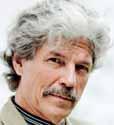
Charms combines soaring melodies with virtuoso piano passages. Vivacious in character, it opens with a fast movement followed by an extensive adagio; the concluding movement is a dialogue of fast and slow that eventually peters out into silence. Kortekangas rewrote and expanded the final section in 2010.
TOMMI KÄRKKÄINEN
Primo formamentum (2007) Dur: 26’ for string quartet and orchestra: 2222-2000-01-str When planning this work, the composer assigned each of its four movements a visual symbol (triangle, circle, square and sawtooth line), which then started shaping of the music. The solo quartet engages in an intense dialogue with the orchestra, particularly in the second movement. Rhythmic, passionate passages alternate with calmer, sonorous moments.
ROLF MARTINSSON
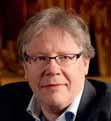



Dawning Landscapes (1984) Dur: 11’ Concertino for Flute, Oboe and String Orchestra (also in a version for string quintet) Alban Berg in Memoriam Martinsson gives a concentrated picture of the dawning landscape. The music vacillates between agitated and calmer sections, but peace is never really attained. The flute and the oboe sing beautifully but anxiously over the very expressive string orchestra. Present here the whole time is a gnawing anxiety, a feeling that changes into sorrow at the final ebbing-away.
HANNU POHJANNORO
time through light / valoa vasten aika (2011) Dur: 20’
Concerto for horn quartet and orchestra: 3333-0331-13-str
This work has a chamber-music feel –there are very few actual solos, as the musical material is passed from each of the four solo horns to another. The idea for this instrumentation came from Schumann’s Konzertstück. The title reflects the original ideas: in order to appreciate the subtleties of natural light, you have to stop and look. The same is true of sounds and listening.
HERMAN RECHBERGER
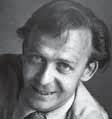
Alovlar (2001) Dur: 20’
Concerto for clarinet, string quartet, frame-drum and string orchestra
An exotic concerto involving styles drawn from classical Azerbaijani music and a concertante group of clarinet, string quartet and frame-drum. The soloist is like a hypnotising snake-charmer while the vivid string figures characterise the movement of flames.
SVENDAVID SANDSTRÖM
Six Pieces for Piano Trio and Orchestra (2010) Dur: 20’ 3333-4331-13-hp-str
Sandström wants to entertain with his music by means of contrast effects. The basic character can be said to be very romantic, even though the romantic sweetness is split up by powerfully pumping percussion and aggressive passages. The focus is on the three soloists and Sandström allows them to appear one by one, all together and with and without the orchestra.
LILLEBROR SÖDERLUNDH
Allegro Concertante (1935/40)
Dur: 6’ for two violins and strings
A double concerto in two movements inspired by J.S. Bach. The short opening Intrada has an almost solemn character and was added to the work as a contrasting movement to the rhythmical, dancing second movement’s Allegro. Here the violinists move forward in exuberant polyphony from the very first bar, and baroque meets Swedish fiddler music.
HIGHLIGHTS 4/2016
Concertos for several soloists or concertante
REPERTOIRE TIPS Works for trumpet and orchestra
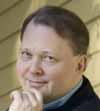

KALEVI AHO
Concerto for Trumpet and Symphonic Wind Orchestra (2011) Dur: 31’ 3353-4331.bar-03
This work is suitable for performance at both wind band and symphony orchestra concerts. It begins with singing, lyrical music. The quick second movement poses great challenges for the soloist, and has some elements of jazz. The calm orchestral writing is interrupted now and then by cadenza-like passages for the trumpet, and the work gradually grows more dynamic and dramatic towards the end. It is at this point that the soloist becomes most virtuosic.
ERIK BERGMAN
Fantasia per tromba ed orchestra (2003)
Dur: 19’ 2222-4330-13-str
The Fantasia dates from the late period of Bergman’s composing career. It differs from the conventional concerto format, being a fantasia in which the trumpet ranges from two solo cadenzas to a final build-up in which each section of the orchestra draws a profile of its own. Different aspects of the trumpet are presented, from translucent chamber music-like intimacy to idyllic ‘Pastorale’ moments. The work reflects elements of the 20th century trend in trumpet interpretation and technique, not least of US jazz and French impressionism.
TOBIAS BROSTRÖM
Lucernaris – Concerto for Trumpet, Live Electronics and Orchestra (2009)
Dur: 30’ 2222-4231-12-pf/cel-str
Lucernaris has been described as a wandering from darkness towards light, and consists of two parts. The first is darker and heavier, opening on the flugelhorn, and ending with a very effective section where the soloist plays against himself in a rhythmic pre-recorded loop. Building up a huge climax, it leads over to a short live-electronic interlude. In the second part it starts to lighten up in the solo part and a shimmer comes over the orchestra. The work concludes with a beautiful chorale-like section where the soloist leaves the stage, and in the very end we hear the muted trumpet playing in the distance. The work is intended to be performed with stage lighting.
DANIEL BÖRTZ
Trumpet Concerto – Songs and Dances (1994-95) Dur: 27’ 2222-2000-11-0-str
Songs and Dances is the first in Börtz’s tetralogy of solo concertos in which the word “songs” is included in the title. And it is obvious how Börtz lets the trumpet sing with expressive melancholy and beauty. But there are also sections dominated by primitivistic and dance-like rhythms. Börtz succeeds in creating real drama in the music. The trumpet engages in a dialogue with the orchestra, which Börtz at intervals lets disappear in order to make room for more trimmed-down sections.
MIKKO HEINIÖ
Envelope for Haydn’s Trumpet Concerto in Eb (2002) Dur: 20’ 3333-4331-13-hp-pf-str
In this work Heiniö “envelops” the Trumpet Concerto by Joseph Haydn in his own music – a combination of wild, muscular sounds and vigorous rhythms – and the result is an exciting blend of old and new. The whole work begins with Heiniö’s music (c. 12½ minutes), proceeds without a break to the Haydn concerto (c. 16 minutes), and ends again with Heiniö (c. 7½ minutes). Heiniö has also added a cadenza to the Haydn concerto and written bridge passages between the movements.
FREDRIK HÖGBERG
The Poem – Concerto for Trumpet and Orchestra (2005) Dur: 25’
2222-4230-12-hp-str
The Poem is a trumpet concerto featuring both theatrics and humour, where the soloist, besides playing, also has to read a poem, do magic tricks, etc. But above all we are offered delightful and unashamedly entertaining music, containing everything from languorous melodies to rhythmical, swinging and very virtuosic sections. The concerto ends with the soloist showing off in a Dizzy Gillespie-inspired finale.
TIMOJUHANI KYLLÖNEN
Concerto for Trumpet and Orchestra
“Cadiz” (2012) Dur: 22’
1111-1110-1-2-str
This concerto was composed as a commission from the Gran Teatro Falla in Cadiz, where Kyllönen was composer-in-residence. The music is a blend of historical and Spanish moods and fanfares, seasoned with Latin percussions. The church bells of Cadiz were the first impetus to the work and they are echoed at the beginning of the Andante movement. The rhythmic fun and games lead to a slow, solemn Maestoso march, after which the fiery Spanish rhythms return and the work builds up to a final climax.
ROLF MARTINSSON

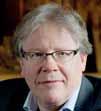

Bridge – Trumpet Concerto No. 1 (1998) Dur: 27’
3332-4331-13-2hp-pf/cel-str
Bridge consists of three large sections linked together by one lyrical and one dramatic cadenza in the solo trumpet part. The first section takes its point of departure from a melodic monogram derived from Håkan Hardenberger´s name, and the music undulates through extensive orchestral culminations. After that follows a slow section with many nuances of sonority, such as playing on so-called musical glasses. The concluding section is thrilling, extremely rapid and virtuosic.
BENJAMIN STAERN




Surprise! (2015) Dur: 15’ 2222-2000-01-hp-str
Surprise! is a lyrical concertino in three movements with melody in focus and a relatively transparent instrumentation. It starts off with a virtuosic Fantasia, which is followed by the second movement’s slow Aria, where the trumpet gets to sing beautifully. The final movement is a clearly humorous and lively Scherzo, which is rounded off by a playful cadenza. Read also the review on this page.
HARRI WESSMAN
Concerto for Trumpet and Orchestra (1987) Dur: 18’ 1111-1100-02-str
The first movement presents two themes including a “sailing theme” in which the composer’s aim was to make the music pleasant in a very summery way and to write as beautiful a melody as possible creating the feeling of sea and the bracing archipelago. In the slow movement the muted trumpet sings melancholy, sentimental thoughts in dialogue with a solo violin. Wessman has also written another work for trumpet and orchestra: the Concertino Mirrors for strings.

HIGHLIGHTS 2/2015
Works for saxophone and orchestra
KALEVI AHO
The Bells / Kellot – Concerto for Saxophone Quartet and Orchestra (2008) Dur: 28’ sax-quartet (sopr., alto, tenor & bar.)+2222-3330-02-str
The sound of the church bell tolling at the funeral of Aho’s colleague and friend Pehr Henrik Nordgren was the decisive impetus for this saxophone quartet concerto. Bells or bell-like sounds are heard in each movement, which gives the work a timbre all of its own and creates some extraordinary moments. The quartet mostly has a rather homophonic part constituting a sort of supersaxophone. Each of the players also has some big solos.
Chamber Symphony No. 3 (1995-96) Dur: 30’ asax+str
This work for alto saxophone and 20 strings was inspired by the Tunisian film The Silence of the Palace. The film contains a lot of Arabian music, and Aho was greatly attracted by its unique melodic heterophony. The first movement of the Chamber Symphony is scored for string orchestra and can be performed as an independent work. The saxophone does not enter, slowly, until the beginning of the second movement. Towards the end, the soloist slowly starts to leave the stage, still playing in glowing terms.
ANDERS ELIASSON



Concerto for Saxophone and String Orchestra (2002/2009) Dur: 25´ asax+str (2002), sop-sax+str (2009)
Eliasson´s concerto is characterised by a kind of spiritual tranquillity, where the lamenting, melancholically singing saxophone and the supporting, billowing strings accompany each other throughout the work. The music flows without a break but there is an underlying multi-movement structure. The serene sections alternate with the more rhythmically accentuated ones in which the tempo is accelerated and the saxophone rushes on in rapid passages.
FREDRIK HÖGBERG
Concerto for Soprano Saxophone and Orchestra (1998) Dur: 26´ sop-sax+2222-2200-11-hp-pf-str
The saxophone introduces itself immediately in Högberg’s concerto, with quick rhythmical, riff-like arabesques that eventually pass over into a happy and harmonious theme. There are some threatening clouds, but the harmony returns at the end of the first movement. The second movement is more rhythmically playful, and in the third yet another light-hearted theme is presented. The finale has a forcefully forward driving character, which is manifested in a wild chase on the virtuoso, fleeing saxophone that lasts right up until the end.
LARSERIK LARSSON
Concerto for Saxophone and String Orchestra (1934) Dur: 20’ asax+str
Larsson is supposed to have said that the Saxophone Concerto was the best piece he ever composed. It was written in close collaboration with the legendary saxophonist Sigurd Rascher, and the solo part is brilliant. Composed in neo-classical style, it follows the concerto form with two fast outer movements, and a slow middle movement. The music is entertaining, rhythmical and elegant, and in the Adagio movement one gets an inkling of the lyrical and romantic Larsson to come.
NILS LINDBERG



Mythological Portraits (2001) Dur: 26´ sop-sax+2222-4431-12-str
This five-movement suite opens with a mood-creating prologue based on a traditional Swedish folk melody, played by the horn section alone. And it is folk music, beautifully combined with jazz harmonies in symphonic attire, which characterises the rest of the music. The soprano saxophone sounds lovely in the melancholy melodies, over an accompaniment that alternates between string orchestra, big-band-like sections and full symphony orchestra.
ROLF MARTINSSON



Golden Harmony – Soprano Saxophone Concerto No. 1 (2012) Dur: 23´ sop-sax+2222-2200-11-str
In this concerto Martinsson displays his gift for lyricism. The first two movements are characterised by beautiful and romantic melody lines, embedded in exquisite sonorities. Martinsson himself describes the orchestral garb as “a luxurious alloy of sound from the piccolo, muted strings and trumpets, stopped horns and a bowed vibraphone.” The third and last movement offers an energetic finale with breakneck virtuosity.
PEHR HENRIK NORDGREN
Concerto for Alto Saxophone and String Orchestra (1995) Dur: 22’ asax+str (55432)
Nordgren’s concerto could be described as one big cadenza in which the soloist gets bound up in the avalanche of orchestral sound. It was inspired by John-Edward Kelly and commissioned by the Ostrobothnian Chamber Orchestra. The concerto is in one movement and, in the manner characteristic of Nordgren, the musical soundscape becomes more peaceful towards the end, journeying towards the light.
TAPIO TUOMELA
Swap – Chamber Concerto for Saxophone and Sinfonietta (2012-13) Dur: 25’ asax/sop-sax+2222-221(ossia tuba)0-02-str
”Swap” refers to constant exchange of short musical motives between the soloist and members of the orchestra. The lively dialogue takes different forms in the four movements. Sometimes the variations provide a set of “accelerated” interactive passages, where the saxophone triggers the orchestral members towards the extreme of their virtuosity. The soloist may use a wide range of his expressive and technical ability on the alto and soprano saxophone, alternating between extreme rapidity, intensive melodies, and sighing multiphones, finishing with a scent of distant swing rhythms.
HARRI VUORI
Concerto for Saxophone and Orchestra
(2004) Dur: 22’ asax+1111-2100-02-hpd-el.org-pf-str
The saxophone begins by calling up the other instruments in the manner of a snake-charmer. Soloist and orchestra at times build up an enchanting melodic and polyphonic partnership. Unusual timbres and quick cuts combine in harmonies tinged with yearning. The concerto culminates in an explosive outburst before sinking back into the opening stillness.
HI G HLI G HT S 4/2014
REPERTOIRE TIPS
Works for chamber orchestra
Daniel Börtz
Sinfonia 11 (2006) Dur: 22’ 2222-2200-10-0-str
A markedly dramatic Sinfonia in four movements, in which fits of rage lurk even in the loveliest of passages. The middle movements vacillates between hope and despair while the outer movements are at the same time epic and concentrated.
Kimmo Ha Kola
Maro (2006) Dur: 15’
Version for chamber orchestra 2222-2221-02-hp-pf-st
The idea behind Maro ties in with a wider cultural landscape, the Baltic Sea, and Hakola’s concern for its future. Musically, it is an allegory for the sea of legend – “the bosom of great narratives, of infinite tension and even tragic heroism. It is the embodiment of mysterious forces, of happiness and blissful calm. All this can be found in my orchestral poem Maro,” writes the composer.
Halvor Haug
Insignia (1993) Dur: 15’ 2222-2200-10-0-str
Haug composed Insignia after his first visit to Lofoten, a group of islands off the northern coast of Norway, where the magnificent scenery inspired him tremendously. The work has the subtitle “Symphonic Vision for Chamber Orchestra” and the somewhat harsh tonal language and the drama in the music produces images of the rugged landscape.
m i HK el Kerem
Divertimento I (2007) Dur: 13’ 2222-2200-10-str

In Divertimento Kerem wanted to write a work that was both modern and, instrumentally, almost Haydnish. The players all need to act as part of an ensemble but have plenty of opportunities to demonstrate their skills in numerous solo passages. The Divertimento focuses especially on the unified melodic movement of the instrumental sections. It evolves towards the expanding and merging of instrumental groups, and in the last section they all work together to a triumphant finish.
o lli Kos K elin
...Like a Planet Silently Breathing (1992-93) Dur: 14’ 2221-2000-01-str
A rich, transparent texture, hypnotic string effects and rhythmically static music that from time to time soars to cosmic heights. As fellow-composer Juhani Nuorvala puts it: “A fragile, chorale-like string texture, wistful solo songs, gushing arpeggios mounting to ecstasy, and the slow pacing of the vibraphone are distinctive features of this piece.”
tommi Kär KK äinen
Atrum unda (2001-02) Dur: 10’ 2221-2200-01-pf-str

The work was, says the composer, inspired by an autumnal landscape in which the shifting reflections on the surface of water momentarily blurred their attachment to their surroundings. The trumpets occupy a prominent role – the opening trumpet fanfare returns, in modified form, towards the end. Kärkkäinen’s idiom is alternately delicate and impassioned, and there is a wild timpani solo at the climax.
j u H ani n uorvala
Notturno Urbano (1996) Dur: 9’ 2222-2100-10-str
The zippy rhythms and shimmering colours make Notturno urbano unusually entertaining – the work has strong associations with American film music. It passes through a romanticallysinging moment of calm, arriving at a breakneck closing section in disco-dance tempo. Nuorvala plays with the synthesiser-like thump of beats and subjects the dance rhythms to wonderful variation, keeping the rhythm exciting and catchy.
m arie s amuelsson








Airborne Lines and Rumbles (2009) Dur: 18’ 2222-2200-10-str
The title here gives you a hint of what the music is about. The airborne flageolets in the strings and quick trills in the winds are combined with powerful, thundering chords and rumbling percussion that propel the music forward. “An abstract, but nonetheless grippingly evocative tone-painting”, wrote music journalist Guy Rickards.
a l B ert s c H nelzer
The Enchanter - Oboe Concerto (2009) Dur: 23’ 2222-2200-11-0-str
This concerto has two main sources of inspiration. The soloist Francois Leleux (for whom the concerto was written) and the novel “The Enchantress of Florence” by Salman Rushdie. The atmosphere of magic is apparent right from the start in the quivering, shimmering orchestral textures from which the oboe part grows gently.

Benjamin s taern

Wave Movements (2011) Dur: 11’ 2222-2200-11-0-str
A concert opener bubbling with energy. Staern has been inspired here by water and its movements; it drips, it ripples, it flows, it eddies, the waves roll and wash over one. The piece can be divided into three parts that overlap one another: a rhythmical first part, a more stationary and melodic second part, and a concluding section where both elements are combined, ending up in a magnificent climax.
m irjam tally
Lament (2013) Dur: 10’ 2222-1111-12-0-str
Lament was composed as a companion piece to Beethoven’s Ninth Symphony. Tally uses a lyrical cello recitative from the IV movement and repeats it in her work to such an extent that it almost becomes a kind of mantra. It is mixed with typical Tally elements as clusters, airy whispering sounds and overtone glissandi. An unobtrusive but exquisite salute to Beethoven.
tapio t uomela

Lappic Double (2003) Dur: 16’ 2222-2110-01-str

Lappic Double was originally composed as background music for the exhibition hall in Rovaniemi in Finnish Lapland devoted to Lapp nature and heritage. Tuomela later reworked it as a concert version in which the orchestra is divided into two complementary, mutually commenting groups; this version has not yet been premiered. The overall character is elegiac and descriptive and readily evokes images of the Lapp scenery in summer.
j onas valfri D sson
The Only Thing that You Keep Changing is Your Name (2009) Dur: 12’ 2222-2200-11-0-str
The work is based on a simple motif consisting of a descending minor third followed by a minor second, and it recurs throughout the whole work in different variations. Valfridsson mixes the simple motif with a more ambiguous and complex orchestral texture, effervescent instrumentation and compact sonorities. Altogether it creates a mysterious and thrilling atmosphere.
Harri v uori
Mythic Images (2002) Dur: 20’ Sinfonietta for chamber orchestra 2222-2200-03-str
Mythic images received great public and critical acclaim. Inspired by Finno-Ugric mythology, the images lead the listener to a world that exists in the collective subconscious. The music proceeds dynamically, with rapid twists, and throbs with primitive energy in the closing movement, “Spells”. The dazzling and refined handling of the orchestra, the pliable glissandos and the myriad musical colours are guaranteed Vuori.
lotta Wennä Kos K i

Hava (2007) Dur: 10’ 2222-2200-01-str
Hava is an example of Wennäkoski’s more recent quick-paced expression. The focal textural element of this scherzo-like, fleetinglyornamented work is “the idea of falling, like the feeling of leaves floating down”. The title is Hungarian and means “snow”. The lyrical element is nevertheless a vital component of Wennäkoski’s music, as are the rich, ear-whetting timbres.
Repe R toi R e tips
REPERTOIRE TIPS
Some 21st century symphonies
DANIEL BÖRTZ
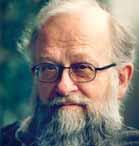
Sinfonia 12 (2010-2011) Dur: 40’ 3343-4441-15-hp-pf-str, solo baritone (Text: Kjell Espmark Sw/Eng)
Börtz utilises a richly coloured palette in his Twelfth Symphony, in four movements, where he effectively alternates between the large symphony orchestra and more chamber music like sections. Motoric drive, suddenly flourishing dream sequences, gongs and glockenspiel sonorities are incorporated into the music. A baritone soloist appears in the slow second movement, in which Börtz has set a poem by Kjell Espmark.
JÖRGEN DAFGÅRD
Sinfonia No. 1 (2003-2004)
Dur: 21’ 2222-2200-10-str
Dafgård’s chamber symphony begins with a prelude, which strikes a creepy and desolate mood that remains in the background. A lyrical cantilena that starts out in the first violins puts its imprint on the Sinfonia’s second part, after which follows a Scherzo with a virtuoso clarinet part in the leading role. The finale is divided into a slow and a fast section, and reverts to material from both the slow beginning and the rhythmically playful Scherzo.
ANDERS ELIASSON
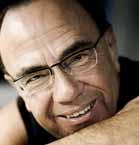
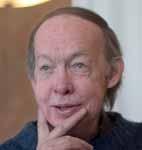
Symphony No. 4 (2005) Dur: 25’ 4333-6331-13-str
Eliasson’s fourth symphony seizes the listener by the throat, at the same time as it conveys a most singular beauty with its tenderly entreating melodic melancholy. It is music charged with energy, constantly moving forward with strong and steady force. But at the very end comes a sudden opening to something else: the symphony ebbs away in a short epilogue with a flitting solo for flugelhorn.
HALVOR HAUG
Symphony No. 4 (2001) Dur: 23’ 3333-4331-13-hp-str
Haug composed his Fourth Symphony in the autumn of 2001, deeply affected by the events of 9/11. The symphony, conceived in one single movement, expresses sadness, anxiety and powerlessness, but Haug also wants the listener to perceive the feeling of hope that is concealed in the music. The end is quite lovely when Haug lets the bells sound over a soft carpet of strings. The symphony is dedicated to “all innocent victims of terrorism around the world”.

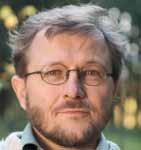
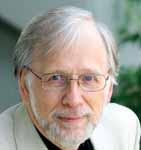

PAAVO HEININEN
Symphony No. 5 (2003) Dur: 33’ 3333-4330-14-hp-cel-str
The fifth symphony followed the fourth after an interval of over 30 years. The very opening already says what to expect: a true orchestral horn of plenty. Heininen describes the music as thematic-melodic, with details festooning its textural simplicity. There are studies in harmonic colour, Baroque-like allusions, and a violin in the background evoking associations with Heininen’s Violin Concerto of 1999.
JUHA T. KOSKINEN

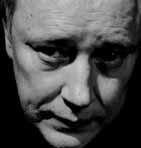
Symphony No. 1 (2006) Dur: 40’ 3333-4331-12-hp-cel-str
The middle movement is the heart and dynamo of this refined three-movement symphony – the sun around which the other movements revolve as planets. As work on it progressed, the materials travelled from one movement to another, leaving tracks by the wayside and setting up “colonies”. The symphony also acquired a musical narrative, or rather several, that culminate in the final bars of the last movement.
PASI LYYTIKÄINEN
Symphony (2006) Dur: 40’ 2222-4230-11-str
Lyytikäinen likens his first symphony to a journey: “My music is like a passing winter landscape. There are changing sound views, sometimes open fields and sometimes icy rocks.” In the focus of attention are not only stringed instruments but also French horns, which have an important role in presenting new thematic motifs. The march episodes in the second movement add Shostakovich-like irony to the vigorous music.
PEHR HENRIK NORDGREN
Symphony No. 8 (2006) Dur: 25’ 2222-4220-13-hp-pf+cel-str
The whole gamut of life is woven into what was to be the last symphony by Nordgren; the expression is dream-like in places, as if reaching out into another reality. The expectant mood of the first movement, Minore, and the clock-like tick of two notes (A-F) stimulate associations with the relentless passing of time. The delicate, limpid Intermezzo leads to a movement entitled Maggiore that is full of joie de vivre and marked by a rollicking folk tune quotation.
SVENDAVID SANDSTRÖM

Symphony No 3 – Kärlekens fyra ansikten (Four Faces of Love, 2006) Dur: 35’ 2222-4230-12-hp-str, solo mezzo-soprano Text: Ylva Eggehorn (Sw)
This symphony is built around four texts by poet Ylva Eggehorn reflecting on the vicissitudes of life, the extraordinary in the ordinary. The tumultuous sound forces, violent eruptions in the percussion and densely interwoven strings, form an expressive soundscape around the sensitive, elegiac, ardent and melodious vocal part.
HARRI VUORI
Symphony No. 2 (2007) Dur: 38’ 2222-2210-02-hp-pf-str
The chords in Vuori’s second symphony are based on manipulated spectral harmonies, and the result is astoundingly bright “spatial” music. Vuori also speaks of the reconciliation of opposing worlds. The translucent, glittering harmony is offset by symphonic grandeur and spectacular orchestral effects.
HIGHLIGHTS 4/2013
REPERTOIRE TIPS Choral works with orchestra

ANDERS ELIASSON
Dante Anarca (1998) Dur: 80’ soprano, alto, tenor, baritone, mixed chorus and orchestra: 3344-4331-14-2hp-str
Text: Giacomo Oreglia (Dante Anarca e i suoi sei maesteri, Ita) Eliasson keeps up the tension and energy throughout this seven-movement apocalyptic oratorio. The music moves between the wildly furious, the intensely expressive and the tenderly beautiful, and leads to a radiant final movement where Dante is depicted as the liberator, the sharpest arrow against evil, fraud, dominion and mammon. He is “the beating heart of our future”.
KIMMO HAKOLA
Song of Songs (2006) Dur: 50’
solo baritone, vocal ensemble, mixed chorus and orchestra: 2222-2200-01-hp-pf+cel-str Text: Bible (Eng)
Song of Songs is a large-scale, radiant oratorio incorporating the whole of the Old Testament Song of Songs in English. Harmony, beauty and lyricism are basic ingredients of Hakola’s music. The very text is, he says, itself like music, and packed with symbolism. It is also an erotic song of praise to love.
OLLI KORTEKANGAS

Seven Songs for Planet Earth (2011)
Dur: 40’
mezzo-soprano and baritone, mixed chorus, children’s chorus and orchestra: 2222-2221-12-hp-str
Text: Wendell Berry, St Francis of Assisi etc. (Eng) This is a sweeping, ecological work, a reflection on nature and its fragility. The heart of it is the poetry of Wendell Berry, a US poet, farmer and academic. One of the major repeated motifs is the beautiful idea of expanding circles. Included are also some primitive elements such as yoiking, a tradition of the Sámi people in Finland.
TIMOJUHANI
KYLLÖNEN
Missa Festiva (2008) Dur: 31’ soprano, baritone, mixed chorus, organ and chamber orchestra: 0000-0000-12-str
Text: Mass (Lat)
Kyllönen’s Mass is, despite its modernism, highly melodic, and precisely because of its beauty and melody easily accessible to the public at large. The organ’s role is to be part of the orchestra, as if to replace the missing wind instruments. The Mass has a clear dramatic charge from the very beginning. It also has zest, a dance-like quality and echoes of Latin-American rhythms.
LARSERIK LARSSON
Förklädd gud/A God Disguised (1940) Dur: 30’ reciter, soprano, baritone, mixed chorus and orchestra, original version: 2222-2210-10-hpstr, reduced version: 1111-2100-10-pf-str, symphonic wind band: 1141-2331-12-double bass
Text: Hjalmar Gullberg (Sw/Eng/Ger)



A lyrical suite in which recitation alternates with musical episodes. The text is based on the Greek myth about Apollo, who visits the earth disguised as a shepherd playing the flute. The basic mood of the work is bright, optimistic and almost pastoral, and the romantic tone language is simple and straightforward. A God Disguised has become a staple of Swedish choral repertoire.
NILS LINDBERG
Requiem (1993) Dur: 45’
2 sopranos, baritone, mixed chorus and enlarged big band: 2000-2440-12-5sax-pf-double bass Text: Requiem (Lat) Lindberg combines jazz with Swedish folk music and Gregorian harmonies to create a dark, brooding and gripping Requiem. Expressive vocal parts, including characteristic ancient folk song ornaments, and choral movements in “Gregorian Dalecarlian style” are framed by the mighty and periodically hard swinging big band.
EINOJUHANI RAUTAVAARA

On the Last Frontier (1998) Dur: 24’ mixed chorus and orchestra: 3233-4331-12-hp-str Text: Rautavaara after Edgar Allan Poe (Eng) Rautavaara’s fantasy opens with a sumptuous, mysterious orchestral section. Beautiful, shining flute and oboe solos against a choral background alternate with a sea of orchestral sound in stormy majesty. The poem by Edgar Allan Poe made an indelible impression on Rautavaara while he was still a lad, and through the text the choir transports the listener on a mysterious voyage towards the limits of the unknown.
HILDING ROSENBERG
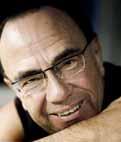
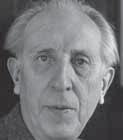
The Revelation of St. John –Symphony No. 4 (1940) Dur: 75’ baritone, mixed chorus and orchestra: 2222-4431-22-hp-pf-cel-str Text: Bible/Chorales to texts by Hjalmar Gullberg (Sw/Eng)
This is a flaming protest against violence and war. It is also music with long lines and sharp contrasts between dynamic, forceful oratorio blocks, ethereal a cappella choruses, and expressionistically suggestive recitatives for baritone and brass. The development goes from horror towards light and hope of “a new heaven and a new earth”.
SVENDAVID SANDSTRÖM
Magnificat (2005) Dur: 20’ SATB soli, mixed chorus and chamber orchestra: 2fl-3trpt-timp-org/hpd-str
Text: Magnificat (Lat)
Sandström’s jubilant Magnificat corresponds to Bach’s original in many ways in respect to the outer form and instrumentation. The work opens in genuine baroque manner with timpani and trumpets and a rhythmical and joyful choral texture. The tone language is diatonic or triadic almost throughout. But also influences from early church music, Gregorian chant and imitative counterpoint can be found.
JEAN SIBELIUS

Oma Maa (My Own Land) (1918) Dur: 11’
mixed choir and orchestra: 2222-4230-11-str
Text: Kallio (Fin/Swe)
Maan virsi (Hymn to the Earth) (1920) Dur: 10’
mixed choir and orchestra: 2222-4230-11-str
Text: Eino Leino (Fin/Swe/Eng/Ger)
These cantata gems have been overshadowed by the maestro’s other works. Despite their patriotic tone they serve as exciting portals to his symphonic world. Oma maa is a sort of hymn to the nightless northern night and towards the end achieves almost sacral rapture – a piece that has been hailed by several Sibelius scholars. Maan virsi is a deep-hued, lyrical song in praise of nature, with charming orchestral sections.

HIGHLIGHTS 2/2013
Cello concertos – classics & more unusual ones
Erik B E rgman
Concerto for Cello and Orchestra
(1998) Dur: 15’ 0001(I=c.fag)/0000/str, bullroarer

This intensive Bergman concerto is a product of his late period. Its breath-taking progress is interrupted by a magical interlude for bullroarer – possibly an instrument he picked up on his travel in 1998 around the world. The contrabassoon is also assigned a big role and adds contrast to the cello’s magnetic, expressive force.
To B ias Bros T röm
Cello Concerto No. 1 (2011) Dur: 21’ 2222/2200/10/str

Composed for conducting solo cellist, the concerto opens suggestively and slowly with repetitive chords in the orchestra, forming the harmonic basis that is expanded gradually. The solo cello’s pentatonic motif develops from out of the orchestra’s carpet of sound, a motif that recurs throughout the entire work. Brisk sections with more temperament and rhythmic accents alternate with parts that are linked to the harmonies and motif of the beginning. The end is a slow diminuendo that fades away far off in the distance.
s ofia g u B aidulina

Aus dem Stundenbuch (The Book of Hours) (1991) Dur: 58’ 4243/4242/14/2hp, zither, egtr, e-bgtr, cel. amp-hpd.pf/str, baritone, narrator, male chorus This cello concerto is scored for an unusual combination; it also has a narrator, a baritone soloist and a male chorus. The text is borrowed from Rainer Maria Rilke and well reflects Gubaidulina’s musical credo: Ich kreise um Gott, um den uralten Turm, und ich kreise jahrtausendelang; und ich weiß noch nicht: bin ich ein Falke, ein Sturm oder ein großer Gesang. (I circle around God, around the most ancient tower, and I circle for a thousand years; and yet I still don‘t know: am I a falcon, a storm, or a much larger song?)
Tommi E Haglund

Flaminis Aura (2000) Dur: 37’ 3222/4231/13/pf/str
Tommie Haglund has a sound world all his own. In the Cello Concerto the fervent cantabile solo part rests against almost unearthly sonorities. The music expresses both pain and hope, but here is also an implicit dimension, a cosmic perspective. In the final section of the concerto the cello is left alone against a sound background of solar winds and electromagnetic fields (registered by the American space bureau NASA), and “the harmony of the spheres” arises.

Joonas kokkon E n


Concerto for Cello and Orchestra (1969) Dur: 25’ 2232/4220/timp.2perc/hp/str
Kokkonen’s concerto has been a firm favourite with cellists for decades now. It has brilliance, natural solo writing and a touch of both the playful and the heart-rending. The orchestration is light and airy, so that it never drowns the soloist. A work in five movements dedicated to Finnish architect Alvar Aalto, it is woven around a wistful Adagio movement and is a fine demonstration of Kokkonen’s musical architecture.
r olf m ar T insson
Cello Concerto No. 1 (2005) Dur: 26’ 2222/4330/12/hp/pf/cel/strings
A concerto that fires the imagination. Martinsson brings out all the cello’s possibilities of expression, from lyrical cantabile to violent frenzy. The romantic features alternate with highly dramatic sections. Add to that a refined orchestral texture and a concluding rapid and rhythmically driving race between cello and orchestra.
H E rman rE c HBE rg E r
Kahraba (Yellow Amber) (1996) Dur: 19’ 1111/0000/00/str, darabuka Kahraba (the Arabic word for electricity) was commissioned by the Cairo Symphony Orchestra. Its main features are superimposed oriental rhythms, maqâm-scale material and the soloistic dialogue of a Western and an oriental instrument. However, it only uses scales that are playable without micro-intervals or non-tempered tuning.
s v E n- david s ands T röm
Concerto for Cello and Orchestra (1988) Dur: 28’ 2222/2220/11/str Sandström has called his cello concerto “an autobiographical diary”. The form is somewhat rhapsodic and consists of thirteen short sections, “emotional pages of my life”, in which we find both sentimentality and playfulness. He lets the romanticism burst into full blossom, but combines this with modernistic outbursts. The concerto concludes with a long drawn-out, varied allusion to the hymn `Nearer, My God, to Thee´.
a l BE r T s c H n E lz E r
Cello Concerto – Crazy Diamond (2011) Dur: 23’ 2222/4321/12/pf/cel/str (version for orchestra) 2222/2200/11/pf/cel/str (version for chamber orchestra)
Schnelzer reawakens the feelings of melancholy and loss that Pink Floyd’s music evoked when he listened to them as a teenager. The music is full of wondrous sonorities and lyrical, lengthy melodic lines, as well as Schnelzer’s unmistakable rhythmic, dance-like motives. It is dramatic and expressive. The concerto concludes with an achingly beautiful song for the cello that lingers on after the music has fallen silent.
v ic Toria Yagling


Concerto for Cello and Orchestra No. 1 (1975) Dur: 22’ 3223/4231/11/hp/str
Concerto for Cello and Orchestra No. 2 (1984) Dur: 23’ 3222/4231/11/hp/str
Yagling’s cello concertos are works of virtuosic brilliance and violent outbursts but also of a melancholy emotional charge that strikes straight to the heart. The slow movements of both well reflect the lyrical side of her music. The beauty is often tinged with a certain mournfulness and a striving towards unfamiliar paths reaching out into new realms. Yagling has written three concertos in all; the third is entitled the Symphonic Concerto for Cello and Orchestra.

Repe R toi R e tips
REPERTOIRE TIPS Selected piano concertos
TOBIAS BROSTRÖM


Piano Concerto No. 1 – Belle Époque (2010/11) Dur: 21’

string orchestra
A nostalgic retrospect of an epoch long past, viewed in a modern light. The opening movement is quick and lively, with energetic, rhythmical motives. It passes over into a lyrical reflection, which leads on to the calm, impressionistically coloured middle movement that also bears traces of Swedish folk music. In the finale the rhythmical motives return and culminate in a brilliant virtuoso ending.
DANIEL BÖRTZ

Concerto for Piano – Songs (2004)
Dur: 32’ 2232/4221/11/str
Börtz describes his concerto as “dark and broad”, and points out the prominent role of the percussion. There are effective dynamic contrasts, powerful culminations, extraordinary sonorities and serene, cantabile passages which create a feeling of tranquillity and solitude. The work is concluded with a strikingly built-up climax in the orchestra (ffff ), which then fades away and leaves the pianist alone in a quiet chorale.
KIMMO HAKOLA


Piano Concerto (1996) Dur: 55’ 3222/2220/12/synth/str
Kimmo Hakola’s mammoth Piano Concerto caused quite a stir at its very first performance. Its lavish range of styles has everything the soloist or listener could hope for, from heroic pathos and humour to heavenly visions. Hakola says he did not wish to impose any constraints, but rather to let the work decide where it wanted to go. The result is an unorthodox cornerstone in Finnish keyboard literature.
FREDRIK HÖGBERG
Ice Concerto (2012) Dur: 25’ 2222-4231-14-piano/str/backtrack (optional synchronised back projection videos by Högberg)
Trying to reveal the secrets of the ice core, we are taken along to the world of ice crystals, where we can experience delightful and groovy music, as well as burning pianos. The inner essence of the ice is interpreted on the film screen by a forceful, partly animated, dance. The music starts out virtuosic and beautifully, and ends with a hair-raising pop finale. Something out of the ordinary.
OLLI KORTEKANGAS
Piano Concerto (2010-11) Dur: 27’ 2222/2221/12/hp/str
This virtuosic piece begins with a piano chorale, the material of which is soon taken up and appropriated by the orchestra. The third movement is a solo cadenza constructed on the lines of a passacaglia, partly improvised or planned. The concerto derives its strength from the shifting colours and moods, and there are some quick, movie-like cuts.
KAI NIEMINEN
Concerto for Piano and Orchestra
(Reflections… In the Enchanted Waves… of Time…) (2007) Dur: 35’ 2222/2200/11/hp/str
A work inspired by Georges Perec’s book Life: A User’s Manual. The story in the book about the two swindlers has been transferred in the music to the passages tinged with irony for the French horn. Other key words of the concerto are Liszt, gondola and Venice. Nor is Chopin forgotten, either; there is a brief quotation from the E minor Piano Concerto in the closing movement.
VELIMATTI PUUMALA
Seeds of Time (2004) Dur: 38’ 3333/4231/13/hp/upright piano/str
Puumala has divided his orchestra into smaller units and singled out players to act as a bridge between orchestra and soloist. The first two, hectic movements are “daytime music”, while the third has softer tones. It is a movement of static images, of windows on a time that just exists without moving. Various seeds of time are sown here and there into the music: snatches of jazz, beautiful melodic outbursts and meditative passages.
TAPIO TUOMELA
Piano Concerto (2008) Dur: 32’ 2222/2200/01/0/str
This concerto written for Iiro Rantala works on the principle of “faster, higher, stronger”. It has room for improvisation, some jazzy jinks and a pinch of performance. Tuomela makes the most of his sinfonietta-sized orchestra, and the communication between conductor, soloist and orchestra has all the panache of live music-making.



WILHELM STENHAMMAR


Piano Concerto No. 2 in D Minor (1904-07) Dur: 30’ 2222/4231/1/str
Conceived in one single span, this four movement, romantic classic is characterised by a “war of the keys”. This conflict creates a tension between piano and orchestra, which is only resolved when the soloist, after the cantabile and melancholy third movement, with a subtle and virtuoso transition, lures the orchestra into his key, in the glorious finale.
LEPO SUMERA
Concerto for Piano and Orchestra (1989/rev1997) Dur: 19’ 2200/1000/10/str
In the first movement, the piano sparkles over transparent orchestration. The role of the soloist is absorbed and minimalistic rather than virtuosic. The second movement begins with a meditative piano theme that grows and culminates in a mighty crescendo. The use of the timpani in the manner of a shaman’s drum is evocative of the potent music of Veljo Tormis.
ADOLF WIKLUND
Piano Concerto No. 2 in B Minor (1917) Dur: 27’ 3223/4231/1/str
There are those who describe Wiklund’s Piano Concerto as a combination of Rachmaninov and Grieg. Here we have a flowing elegance, expressive melodies, Nordic melancholy and harmonic surprises. It is easy to be carried away by the unexpected sweeping gestures and melodies, as well as by the splendid handling of the orchestra. A romantic gem.
Repe R toi R e tips
* also available for voice and piano
Ka LE v I a ho Kysymysten kirja
(Book of Questions, 2006) 28’
Song cycle for mezzo-soprano and chamber orchestra: 1111-1000-01-str
Text: Pablo Neruda, transl. by K. Kallio (Finnish)
A meditative, philosophical song cycle based on Pablo Neruda’s book of the same name asking mysterious and enigmatic questions. Aho’s focused, lucid music gives space for the text and the combination makes the listener come out in goose pimples again and again.
*Kiinalaisia lauluja (Chinese Songs, 1997) 20’ for soprano and orchestra: 2221-2211-01-1-str
Text: Old Chinese poems, transl. by P. Nieminen (Finnish)
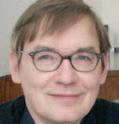
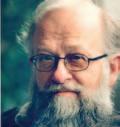
These are songs charged with delicacy and passion. The underlying mood becomes gradually darker from the initial radiance until the sixth song finds a new light and ends in a mood of heavenly bliss.
Da NIEL Bö R tz
Kassandras spådom
(The Prophecy of Cassandra / Die Prophezeiung der Kassandra, 2001/2005) 13’ for alto and orchestra: 2222-2210-12-str
Text: Aischylus/Emil Zilliacus (Swedish/English/German)
A poignant and dramatic scene from Börtz´s acclaimed oratorio His Name Was Orestes, in which Cassandra predicts the murder of Agamemnon in his bath and her own death. It begins with the sighs, falling and rising, and grows to mighty chords that follow the lamentations of Cassandra. The music matches the dark mood of the text with its expressive vocal part and evocative orchestration.
K IMM o h a Ko L a
*Kivi-laulut
(Seven Songs to Texts by Aleksis Kivi, 2007/2011) 27’ for baritone and strings (hp-str), chamber orchestra (2222-221011-1-str ) or symphony orchestra (3333-4331-12-1-pf-str)
Text: Aleksis Kivi (Finnish)

Hakola has translated Kivi’s most beautiful poems into Romantic language. The songs have catchy, folk-like melodies and a whole range of emotions: playful waltz rhythms, heart-rending melancholy, defiant bravado and amusing musical allusions. The cycle ends with the woeful Song of my Heart that is like a hypnotic poem reaching across into the world beyond.
M IKKo hEINI ö
*Syyskesän laulu
(Late Summer Song, 2008) 17’ for baritone (or bass) and orchestra: 22222200-01-str Text: Lassi Nummi (Finnish)
A vocalist’s dream: lyrical expression combined with beautiful, elastic orchestration and Nummi’s tender texts. The sensitive, impressionistic mood is airy and heedful throughout. This is music with subtle gestures, and everything in the score is carefully thought-out and weighty. Vuelo de Alambre (Barbed-wire Flight, 1983) 28’ for soprano and orchestra: 3333-4331-13-1-cel/pf-str
Texts: anonymous Chilean prisoners (Spanish)

Heiniö’s song cycle radiates vocal and rhythmic brilliance. The powerful human emotions of the texts are admirably portrayed in the music: longing, grotesque eroticism, a mother’s despair and a spark of hope. The music is not without some surprises, from a familiar march tune and Latin-American rhythms to tremendous vocal melodies.
tIM o-Juha NI Ky LLö NEN
*Amor vivus (2007) 26’ for baritone and orchestra: 22224230-11-str
Text: Maritza Núñez, transl. by M. Rossi (Spanish/Finnish) Kyllönen’s erotic song cycle consists of settings of poems by Maritza Núñez, a Peruvian writer now living in Finland. The mood is intimate and the orchestral palette reflects the delicious world of the poems, steeped in colour. The sensual beat is always present and there are also tango elements in the last movement.
I NG va R L ID ho LM stund när ditt inre (hour when your soul, 1998) 15’ for baritone and orchestra: 2222-4330-11-1-str

Text: Erik Johan Stagnelius (Swedish)
Recommendations
– some gems for voice and orchestra
A sublime setting of Stagnelius’ famous poem, Friend! In this desolate hour, where Lidholm conjures up the feelings of a person in a deep crisis and the hope that ultimately returns. The title itself gives an indication of the sparseness that is so typical of the musical style. A highly expressive monologue where the singer is active almost throughout the entire work.
NILS LINDBERG
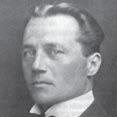




Three Shakespeare Sonnets (2011) 15’ for soprano and string orchestra
Text: William Shakespeare (English) Nils Lindberg has set these texts with a sensitivity matched by few native English speakers. The songs are gorgeous, with Lindberg’s unmistakable blend of Swedish folk tone and jazz. The suite includes a new arrangement of Lindberg’s much loved Shall I Compare Thee to a Summer’s Day.
Ro L f Ma R t INSS o N
Orchestral Songs to Poems by
Emily Dickinson (2009) 26’ for soprano and orchestra: 2222-4220-12-1-pf/cel-str Text: Emily Dickinson (English)
A song cycle comprising 10 songs divided into three parts: Songs of Love, Songs of Nature and Songs of Life. Martinsson uses a broad palette of timbre to give the delicate shades and nuances in the texts a sounding mirror image. The aphoristic texts have clearly left their mark on the work, in respect to both form and instrumentation.
S E ppo Nu MMI
*Vuoripaimen (Der Berghirt/The Mountain Shepherd, 1951/2004) 15’ for tenor and orchestra: 1111-0000-01-hpd-str arr. Pekka Haapasalo
Text: Lassi Nummi, transl. by G.L. Buckbee, V. Steinbock (Finnish/ English/German)

Nummi originally wrote his Mountain Shepherd songs for voice and piano when he was only 20. A pastoral fantasy set in China, it has elements of Baroque music and represents the sensitive marriage of word and music. According to Tommi Hakala, The Mountain Shepherd is a hidden treasure and one of the finest works in the Finnish song repertoire.
Gö S ta Ny S t R o EM
*Sånger vid havet
(Songs by the Sea, 1942) 14’ for mezzo-soprano and orchestra: 1111-2100-11-1-cel-strings
Text: Ebba Lindkvist, Edith Södergran, Ragnar Jändel, Hjalmar Gullberg (Swedish/English)
Song No 4 ‘I built a Home near wide Seas’ and No 5 ‘The Moon I Wait’ have English translations
Five songs that glide between the bright atmosphere of the archipelago and the shady shores, from turbulence to consolation. They are distinctive pictures, using almost impressionistic colours and a hint of Nordic lyricism. The vocal contour, the timbre of the orchestra and the poetic visions are fused into an entity of divine geometry.
*Det enda (L´unique au monde/L´unico/To the Sea/Das Einzige, 1947-48) 9’ for mezzo-soprano and orchestra: 3333-4221-11-1-pf-cel-strings Text: Ebba Lindqvist (Sw/Fr/It/Eng/Ger)
To the Sea is the centrepiece of Nystroem’s grand Sinfonia del Mare, but can also be performed separately. It belongs to the most beautiful pieces ever written in Swedish music with its quiet, billowing vocal part and the undulating swells in the colourful orchestral texture.
Tu RE R AN g STR ö M
*Vingar i natten (Nächtliche Flügel/Wings in the Night, 1917/25) 3’ for medium voice and orchestra: 2000-2110-10-strings
*Melodi (Melodie, 1917/25) 3’ for medium voice and orchestra: 2121-1000-01-1-strings
Text: Bo Bergman, transl. by T. Rangström (Swedish/German) Ture Rangström’s more than 250 songs constitute a high-water mark in the great Swedish song tradition. The music is closely fitted to the inflection and rhythm of the texts in a fashion that gives his songs a moving directness. His settings to texts by Bo Bergman, rank among his finest works, including the melancholy, dramatic and stormy Wings in the Night, and the contrasting bright and lyrical Melody
R toi R e tips
Song cycles
Ka L evi a ho
*Kiinalaisia lauluja (Chinese Songs) (1997, Fin) Dur: 20’
These Aho’s songs for soprano and piano have both sensitivity and passion and they follow closely the delicate moods of the Chinese love poems. The initial radiance dims as the work proceeds, before returning and ending in the last, sixth song in a mood of heavenly bliss.
a nders a nnerho L m
Stjärnmusik I (Star Music I) (2015, Swe) Dur: 11’
Three songs on poems by Nelly Sachs about how to live on after experiencing the acts of cruelty of the Holocaust. Composed with the classical Lied in mind, but with a tonal language and expression of the 21st century, the music is characterised by a kind of expressive minimalism. The timbres and the phrasing of the words are central at the same time that the piano and the voice parts play equally important roles.
danie L b örtz
Klangernas sånger (Songs of Sonorities) (1999, Swe) Dur: 25’
Seven settings for baritone or mezzo-soprano and piano of poems from Göran Sonnevi’s Book of Sonorities, which form a unity stylistically as well as motivically. It centres on the feeling of the loss of a near relation. Here there are sharp contrasts, violent tremolos and painful, expressive climaxes. A wealth of sonorous variation, that ends in a bright sphere.

a nders eL iasson
Vier Lieder (1993, Ger) Dur: 12’
“What is more beautiful than a lullaby? And what lullaby is more beautiful than Goethe’s Wanderers Nachtlied?” With these thoughts in mind Eliasson set this and another three poems by Goethe for mezzo-soprano and piano, on commission for the Grieg jubilee in 1993. The songs are airy and transparent, rooted in the classical-romantic Lied tradition, and integrated into Eliasson’s own sound world.
Kimmo h a Ko L a
*Kivi-laulut (Seven Songs to Texts by Aleksis Kivi) (2007, Fin) Dur: 27’
Best-loved poems by Kivi showcased in Hakola’s magical musical vitrine. Catchy melodies, mournful yearning, impressionistic mood paintings and humorous defiance. According to the critics, “the work is as warm, moist and traditional as rye bread straight from the oven”. For baritone and piano.
m i KKo h einiö
*Syyskesän laulu (Late Summer Song) (2008, Fin) Dur: 17’
This cycle is a collection of beautiful, lithely sensual settings of delicate texts by Lassi Nummi. The seven songs hang together like strokes from a paintbrush to form an impressive, dramatic arch. Composed originally for bass but later transposed for baritone; also available for mezzosoprano.
Lars Kar L sson


Med havet (By the Sea) (1976, Swe) Dur: 12’
The sea is strongly present in these four songs for baritone or mezzo-soprano to texts by KarlErik Bergman, a writer and fisherman from the island province of Åland. An early work by Karlsson, it is a musical cycle in which natural phenomena act as symbols of the human lifecycle.






oLL i Korte K angas
Syvä ilo (Profound Joy) (1996, Fin) Dur: 12’
This song cycle pays respect to the Lied tradition and is admirable proof of the great flashes of insight that may ensue from the seamless encounter of word and sound. The four songs are settings of words by Aaro Hellaakoski, Lassi Nummi and Kai Nieminen. Available in versions for high, medium and low voice.
Jyr K i Lin J ama
Das fliessende Licht der Gottheit (2012, Ger) Dur: 15’
A song cycle based on texts by Mechthild von Magdeburg, a female mystic and a Beguine whose poems connect with the tradition of The Song of Songs. The music continues the thematic line of Linjama’s acclaimed church opera Die Geburt des Täufers and is a homage to genuine Christian mysticism. For mezzosoprano and piano or mezzo-soprano, viola and harpsichord.
Kai n ieminen Landscapes (1997, Eng) Dur: 10’
Peace and tranquillity dominate the mood of these Landscapes for voice (any register) and piano. The piano part uses the pedal to create transparent, cluster-like harmonies. The Locrian mode and the enigmatic texts by Emily Dickinson give this popular work a delicate, dream-like atmosphere.
aL bert s chne L zer Requiem (2004, Swe) Dur: 13’
Edith Södergran’s poem Smärtan (The Pain) is the connecting link in Schnelzer’s gripping Requiem for soprano and piano. The poem has been divided into three songs, which are characterised by dark timbres and sorrow. The other two poems, Love and The Rose, are contrasting bright middle movements, where the lyrical and beautiful hold sway. Composed in memory of Fadime Sahindal who was the victim of an honor-related killing.
b en J amin s taern
* Tranströmer Songs (2009, Swe) Dur: 12’
Four settings of poems from Tomas Tranströmer’s The Sorrow Gondola, in which Staern brings out both the lyrical and the dramatic moods of the texts, and clearly has a story to tell. The work presents exciting contrasts with a modernistic tone language, a distinctly melodious alto voice part and intricate passages in the piano.
Johan U LL én




*Lady Macbeth (2009, Eng) Dur: 10’
Three monologues, for mezzo-soprano and piano, about malice and power with texts taken from Shakespeare´s Macbeth (act I, scene V). The three songs (I. They met me II. Glamis thou art III. The raven himself), form a dramatic arch in which both the expressive vocal part and the piano well depict the inner tensions of the text.
*available also as an orchestral/ensemble version
Repe
Repe R toi R e tips
Violin Concertos
Kalevi a ho Concerto for Violin and Orchestra (1981) 3333/3330,1barhn/11/1/str Dur: 30’





Strong melodic expression dominates this Aho concerto marked by playfulness, drama and powerful build-ups. The dynamic peak is the ironic waltz in the third movement which, as it proceeds, acquires dark tones and ends in an ethereal lullaby – a dreamlike farewell to all that has passed. Commissioned by the Finnish Broadcasting Company.
To B ia S BR o
STRÖM
Violin Concerto (2009) 2222/4231/11/1/str Dur: 20’
A colourful and temperamental concerto with a classical structure in three movements but with a tone language that instils the feeling of the 21st century. One gets an inkling of Broström’s background as a percussionist in the rhythmically practised solo part, especially in the last swinging movement. The orchestral texture offers a fantastic wealth of sound in which the marimba and the vibraphone have prominent roles. Premiered by Karen Gomyo and the Gävle Symphony Orchestra.
a ND e RS elia SS o N Einsame Fahrt (2010) 2222/4200/02/cel/str Dur: 25’
The violin is present throughout in Eliasson’s continually progressing journey in one coherent movement. The solo part is incredibly virtuoso but idiomatically written as well. Melodic and lyrical lines spread out between the fast sections. The tone language is intense and profound and one recognises the Eliassonian restlessness and the harmony that is all his own. Premiered by Ulf Wallin and the Swedish RSO.
To MM ie haG lUND Hymnen an die Nacht (2005) Symphonic poem for violin and orchestra 2222/4231/11/piano/str Dur: 38’

Haglund treats us to a spiritual voyage through the night that starts out with a three-minute-long shimmering monologue in the violin – the first in a series of virtuoso cadenzas. The concerto is mostly serene, but there are also sections of violent pain that make the music feel almost physical. An emotionally affecting work, commissioned and premiered by violinist Elizabeth Pitcairn and the Helsingborg Symphony Orchestra.

Mi KKo h ei N i Ö
Alla madre (2007) 3333/4331/13/1/str Dur: 35’
Deft, distinctive Heiniö interspersed with theatrical elements, riotous rhythms and humour. At the beginning, the soloist just sidles onto the platform and takes his place in the middle of the orchestra. In the second movement the solo violin lights up notes in the orchestral harmony like individual lamps. The sensual closing movement presents Heiniö at his most tender and the end is exquisitely beautiful. Kurt Nikkanen premiered this work with the Turku Philharmonic Orchestra.
l a RS Ka R l SS o N Concerto for Violin and Orchestra (1991/93)
2222/4230/12/1/cel/str Dur: 27’
Karlsson’s zippy concerto has two movements: Lento and Vivo. The former begins forcefully and continues in a rich, impassioned

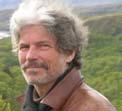

dialogue between the orchestra and the soloist. During the intervening tranquillo episodes, the violin waxes lyrical and almost painfully beautiful. The Vivo movement features virtuosic moments for the orchestra and some muscular orchestral writing in which the woodwinds have a chance to shine. The revised version was premiered by Grigori Zhislin and the Tampere Philharmonic.
Jy RK i l i NJ a M a Concerto for Violin and Orchestra No. 3 (2001)
2222/2100/02/cel., piano/str Dur: 37’
Passionate, lingering sighs resonate in this Linjama concerto with a limpid orchestral texture. The chaconne construction affords changing musical landscapes: fan fares, a Sarabande, chorale quotations and dance rhythms. Linjama’s music has a delicate, exploratory, harking tone throughout. Co m mi s sioned by the Finnish Broadcasting Company and dedicated to Kaija Saarikettu.
R ol F M a RT i NSS o N
Violin Concerto No. 1 (2007) 2222/2200/01/str Dur: 28’
An incredibly persuasive piece with ecstatic lines, supported by a warm and rich orchestration. It has a superb sense of structure to send us on a journey which, particularly in the central section of the work, has a strong meditative power, but which has such a vivid landscape of colour, particularly toward the madly accelerating ending, that always grips the listener and performer. Premiered by Jan Stigmer and the Swedish Chamber Orchestra.
Kai Nie M i N e N
Violin Concerto “Il viaggio del cavaliere... (inesistente)” (2005) 2222/2110/11/1/str Dur: 31’
The first of the four movements in this concerto presents a soloist in playful, virtuosic mood posing challenges that evoke fanfarelike reactions in the orchestra. A harp in the role of squire creates a dream-like atmosphere: it is as if Nieminen were telling his listeners an ever-shifting, lucid fairytale. Premiered by Erkki Palola and the Vaasa City Orchestra.
e i N o JU ha N i RaUTavaa R a Violin Concerto (1976-77) 2222/4330/13/1/cel/str Dur: 27’
The concerto begins with a haunting violin cantilena and proceeds in birdsong-like arches as Cantus arcticus landscapes flash by in the background. In the second movement, Energico , the violin at times aspires to romantic heights. The furious stretto was inspired by New York’s Manhattan. According to Rautavaara, the solo violin was to live its final moments passionately and restlessly, untiringly penetrating the orchestral texture right up to the very last bars. Premiered by Eugen Sarbu and the Finnish RSO.
M a R ie S a MU el SS o N Bastet the Sun Goddess (2004) 2222/2220/03/str Dur: 20’
A suggestive, exotic and sensual concerto in which the violin wanders about in different mood-creating soundscapes. The solo part often stays in the high registers of the violin. Radiant, bright flageolets contrast with oriental glissando motifs, rhythmical figurations and muffled double basses. Premiered by Anna Lindal and the Norrköping Symphony Orchestra.

Works for string orchestra – with passion

ANDERS ELIASSON

Ein schneller Blick…ein kurzes Aufscheinen (2003)
Dur: 17’
This is a fine example of Eliasson’s exquisite string writing. The title is not a quote but a distinctive feature of the work. The music begins with a minimalist and frenetically repetitive rhythmical energy which is followed by a more melancholy Tranquillo section. The concluding Presto has an almost fiddler-like drive. Commisioned by Camerata Roman.
M I kkO H EINI ö Minne (1996)
Dur: 18’
Heiniö’s Minne features both rhythmic fireworks and lyrical moments. It consists of three movements each different in character. Hovering in the background of Martellato are rhythm and blues; Cantabile is marked by expressive, singing polyphony and Animato is a quick, throbbing dance. Premiered by the Ostrobothnian Chamber Orchestra and Juha Kangas.
PAAv O H EININEN
Sinfonietta Op. 66i (1996/2000)
Dur: 19’
The Sinfonietta is in four movements (Sonata, Scherzo, Elegia and Ricercata), all waltzes. Together they trace a symphonic arch. Dance is strongly present throughout Heininen’s big opus 66 embracing over 40 works for string or chamber orchestra. Commissioned by the Lapland Chamber Orchestra.
ROLF MARTINSSON




A. S. in Memoriam (1999/2001)
Op 50a (version for 15 strings 5-4-3-2-1)
Op 50b (version for large string orchestra) Dur: 12’
A. S. in Memoriam was composed in memory of Arnold Schönberg and his Verklärte Nacht. Martinsson has sought to mirror the vocabulary, gesture and musical characters present in Schönberg’s music. It is Martinsson’s most frequently performed work and was premiered by the Gothenburg Symphony Orchestra under Neeme Järvi.
P EHR H ENRI k N ORD g REN
Transe-Choral (1985)
15 strings (5-4-3-2-1) Dur: 33’
A work in two broad sections, the idea being for the listener to mentally prepare for the second by listening to the silence after the first. Its painful chorale themes ultimately lead to a radiant, almost sacred, trance-like final motif. Premiered by the Ostrobothnian Chamber Orchestra and Juha Kangas.
Ju HANI Nu OR vALA Sinfonietta (1997/98)
Dur: 19’
The Sinfonietta is a string-orchestra version of Nuorvala’s Second String Quartet. The opening Andante movement at times creates a

romantically soaring world of sound. The dreamlike Tranquillo leads to a dancing closing movement bursting with life and drive. A Tapiola Sinfonietta commission premiered in 1998.
MARIE SAM u ELSSON Rotations (1997/2003)
Dur: 14’
The sound idea of Rotations was born when Samuelsson was composing in her country house. The rain was pouring down onto her tin roof, so heavily that it flowed into her music. She could not concentrate on anything else but that dripping sound which is present in the work right from the start: pizzicato-dripping strings in the high registers that play percussive counter-rhythms. Commissioned by Musica Vitae.
ALBERT SCHNELZER


Emperor Akbar (2010)
Dur: 12’
As always Schnelzer gives the listener an imaginative experience. Inspired by the complex character of Akbar the Great, the music starts brutally with the Emperor chopping the head off a young rebel, after which rhythmical and violent passages alternates with more contemplative and serene scenes. A string-orchestral version of Schnelzer’s Second String Quartet. Premiered by the Tromsø Chamber Orchestra.


BENJAMIN STAERN
Cross Draught (Tvärdrag) (2007)
Dur: 8’
In Staern’s energetic and vigorous string piece the orchestra is divided into two groups placed opposite each other. Melodic lines, chords, rhythms and grooves are thrown from one group to the other creating a musical cross draught. Commissioned by the Malmö Opera Orchestra.
vELJO TORMIS
Reminiscentiae (2009)
Rather than a suite as such, this is a sort of “rendezvous of reminiscences”. It consists of choral works transcribed for string orchestra that can be performed separately or in combination. Among them are the four-movement Nature Pictures (Looduspildid) and Tormis’s hypnotically primitive St. John’s Day Songs (Jaanilaulud), the sustained, singing melodies of which are just right for strings.
E R kk I -Sv EN Tüü R
Action-Passion-Illusion (1994)
Dur: 15’
The rhythmically syncopated opening is indeed an action-packed start to this popular work with Passion, a meditative middle movement, at its heart. It sets off in a low register on the double basses and cellos and gradually expands into a chorale-like, intensive outburst. The Tallinn Chamber Orchestra premiered the work with Tõnu Kaljuste.
Repe R toi R e tips
REPERTOIRE TIPS – Nordic Clarinet Concertos


Kalevi a ho
Concerto for Clarinet and Orchestra (2005) 2222/3221.barhn/perc/hp/str Dur: 30’
A powerful concerto that grips the listener from beginning to end. It covers a vast emotional range, from melancholy beauty right through to wild intensity. Woven into Aho’s personal, distinctive idiom are lots of solo display elements. Premiered by Martin Fröst and the BBC Symphony Orchestra under Osmo Vänskä.
Daniel Börtz
Clarinet Concerto – Songs and Light (1998) 2232/2421/timp.2perc/str Dur: 27’
Number three in a series of four solo concertos with “Songs” as a title in common. The first movement’s rapid and dizzying interplay between light and shade leads over to the central feature of the concerto, movement two – Largo espressivo – which from its darkness radiates long beams of light toward the concluding movement. The third movement is a driving, fast Presto energico permeated with bright light. Premiered by Kjell Fagéus and the Malmö Symphony Orchestra.
a n D ers e liasson
Concerto for Clarinet and Orchestra –Sette Passagie (1992) 2222/3220/str Dur: 23’
In this concerto the clarinet leads the listener through ‘seven passages’ (emotional states); from ‘spirited’ to ‘floating’, ‘agitated’, ‘calm’, ‘threatening’, ‘dismal’ and ‘fickle’. The music is both easily accessible and deeply intricate and the orchestra allows for a wide palette of colours. Commissioned for Håkan Rosengren by the Helsingborg Symphony Orchestra.
Kimmo h a K ola
Clarinet Concerto (2001) 2222/2221/timp.perc/hp/str Dur: 40’
A showpiece that drives the audience to ecstasy and onto its feet. Hakola’s boundless imagination has produced a wild mixture of hammering rhythms, romantic sentimentality and glittering timbres. The Klezmer dance in the finale caps the carnival mood. The Avanti! Chamber Orchestra and Kari Kriikku premiered this work in 2001.
Fre D ri K h ög B erg
Dancing with Silent Purpose (2008) clarinet/strings/backtrack and video Dur: 11´ Something out of the ordinary. A multimedia concerto in four parts, and an attempt to develop the classical concert format by the addition of backtrack and film. The images and the electronic music are integrated into the web of the orchestra and the soloist, and this music really swings! Premiered by Martin Fröst and the Jönköping Sinfonietta in 2010.
r ol F m artinsson
Kai n ieminen
Clarinet Concerto “Through Shadows I Can Hear Ancient Voices” (2002)
2222/2100/timp.perc/cel/str Dur: 28’
The middle movement represents the concerto at its most lyrical. The orchestral instruments are as “shadows” to the soloist while at the same time they are in dialogue with the clarinet. The sound nevertheless remains translucent throughout, as is typical of Nieminen’s music. A work dedicated to Mikko Raasakka, who premiered it with the Vaasa City Orchestra in 2002.
Juhani n uorvala
Clarinet Concerto (1998)

2212/2000/2perc/electric bass/str Dur: 23’
A sexy beat, cinematic twists and stirring soundscapes – this work has real hit potential and offers the soloist a tremendous chance to show off. Likened in musician circles to another “crossover” work, the Hakola Clarinet Concerto. A Tapiola Sinfonietta commission premiered in 1998 by Harri Mäki.
e ino J uhani r autavaara
Concerto for Clarinet and Orchestra (2001–02)
2222/4221/timp.2perc/hp/str Dur: 26’
A work in which the soloist can be both brilliant and lyrical. The drama of the first and last movements is offset by an almost painfully beautiful middle movement that is like one long, melancholy sigh. Premiered by Richard Stoltzman and the National Symphony Orchestra conducted by Leonard Slatkin.
h erman r ech B erger
Alovlar (Ehtirasli) / (Passionate) Flames (2001)
Concerto for Clarinet (or bass clarinet), String Quartet, Frame-drum and String Orchestra (min 44322) Dur: 20’
An exotic concerto involving styles drawn from classical Azerbaijani music and a concertante group of clarinet, string quartet and frame-drum. The soloist is like a hypnotising snake-charmer while the vivid string figures characterise the movement of flames. Premiered by Mikko Raasakka and the Lahti Symphony Orchestra, conducted by Osmo Vänskä, in 2003.
s ven-Davi D s an D ström
March Funèbre
(2006)
– Be still my Child
2002/2000/str Dur:20’ (version for chamber orchestra), 2222/2220/2perc/str (version for orchestra) Dur: 20’
Text: Gunnar Ekelöf (English)









A remarkable work in that a poem, recited by the soloist, is integrated in the concerto. The soloist by turns reads verses from the poem and comments on the clarinet. The work concludes with a beautiful, purely instru mental epilogue in which the clarinet is allowed to come into full bloom. A joint commission for Martin Fröst from Turku PhO, Norwegian ChO, Amsterdam Sinfonietta, Swedish ChO and Orchestra Haydn.
Concert
Fantastique
– Clarinet Concerto No. 1 (2010)
2222/2210/timp.2perc/hp/str Dur: 24´
A dizzying experience in five parts. The first part is mobile and resolute. In the second the soloist plays only one note – but so much the longer notwithstanding – without taking a breath. Part three is the work’s lyrical peak. Part four a giddy solo cadenza that leads over to the fifth and last part in an accelerated and whirling tempo. A joint commission for Martin Fröst from Malmö SO, City of Birmingham SO, Royal Stockholm PhO and the Norwegian Arctic PhO.
h arri v uori
Concerto for Bass Clarinet and Orchestra (2001)
2222/2210/2perc/pf/str Dur: 20’
The opening movement is a dream-like texture rich in colour and in this sense typical Vuori. The bass clarinet’s ability to leap from high to low and its tremendously wide register tempted Vuori to score in some high, bright, shimmering planes of sound. Premiered by Marko Portin and the Hyvinkää Orchestra in 2001.
10 Fresh Concert starters
Kalevi a ho Minea (2008)


4444/6431/timp.3perc/hp/pf.cel/str (16-14-12-10-8) Dur: 18’

One great, intensive crescendo exploiting the orchestra’s timbres to the full. The subheading Concertante music for orchestra lives up to its promise: the various instrumental sections all have a chance to show off as the volume and tempo are gradually stepped up. The percussion instruments and Arabian rhythms lend additional spice. Commissioned by the Minnesota Orchestra and Osmo Vänskä.
Tobias b ros T röm
Transit Underground (2007)
2222/4231/timp.2perc/str Dur: 10’
A concert opener with a decidedly urban feel. It starts out with stealthy pizzicatos in the double bass taken from the underground, and finishes polyrhythmically with brass, percussion and strings from the pulsating and clamorous big city. Commissioned by the Gävle Symphony Orchestra and Robin Ticciati.
Jörgen DafgårD




Through Fire and Water (2008-2009)
4454/6441/timp.3perc/hp/str Dur: 13’
A large orchestral palette is used in this work that can be described as a symphonic poem. A solo clarinet presents an optimistic, slightly naïve theme, which after an ordeal by fire comes in contact with the complementary element, water. The theme later emerges again with greater strength and maturity in a powerful conclusion. Commissioned by the Malmö Symphony Orchestra.
Kimmo h a Kola
Le nuage d’Oort (2009)
3332/4331/timp.3perc/hp/pf/cel/str Dur: 10’
A work premiered in 2009 along with other additions by contemporary composers to Holst’s classic The Planets. Glitteringly beautiful and ominous tones alternate in Le nuage d’Oort. Lasting about 10 minutes, it ends on a hypnotically soft and stunning pianissimo. Premiered by the Helsinki Philharmonic Orchestra and John Storgårds.
m i KKo h einiö
Maestoso (2008)
3333/4331/hp/timp.3perc/str Dur: 9’
Heiniö’s recent orchestral work Maestoso is subtitled Variations of a Fragment by Eric XIV. It was composed as a work in its own right in summer 2008 while Heiniö was awaiting the completion of the libretto for his new opera Eric XIV. He later used it, slightly altered, as the overture to the opera. The Tampere Philharmonic is to premiere it on 7 October 2011 with Hannu Lintu conducting.
Jyr K i l in J ama Allerheiligentag II (2009) 2222/2200/timp/str Dur: 16’
Linjama’s symphonic meditation Allerheiligentag II begins tenderly and softly. Linjama himself speaks of the general sensitivity of his music, its obvious mimosa-like quality which is evident in this lyrical work commissioned by the Sinfonia Finlandia Jyväskylä.

r olf m ar T insson
Open Mind (2005) 2222/4230/timp.2perc/str Dur: 10’
Martinsson wants to expose the listener’s “open mind” to tonality, virtuosity and quick, sweeping tempos, but also to spontaneity, joy, energy and vitality. Indeed, he is quite successful in this striking and colourful concert overture. The work was written on commission from the Swedish Radio Symphony Orchestra to be the opening work at the Baltic Sea Festival in 2005.

v eli- m aTT i Puumala Memorial Fragment (2008) in memory of P. h nordgren violin obligato and string orchestra Dur: 13’ Puumala’s music is crystal clear. The violin obligato at times acquires sacral tones, like in The Thinker in Nordgren’s Portraits of Country Fiddlers. At the premiere the orchestra was scattered around Kaustinen Church and the leader moved from one section to another. Commissioned by the Kaustinen Chamber Music Festival and premiered by the Ostrobothnian Chamber Orchestra and Juha Kangas.
a lber T s chnelzer

A Freak in Burbank (2008)
2222/2200/timp.perc/str Dur: 9’
Albert Schnelzer conjures up a magical world where whirling woodwinds and energetic, pressing strings succeed one another. A witty, lavishly orchestrated and highly imaginative piece inspired by a book about film director Tim Burton. Commissioned by the Stockholm Chamber Orchestra.
b en J amin sTaern
Jubilate (2009)
3333/4331/timp.3perc/hp/str Dur: 8’
This piece delivers on what the title promises with exultant fanfares and an explosion of sonorities. But there is also room for beautiful, lyrical passages. The title Jubilate refers to people who shout with joy and rapture, but also the opposite: the threatening and screaming mob. Commissioned by the Gothenburg Symphony Orchestra.
Repe R toi R e
tips
Wind and brass bands
k a L evi aH o
Concerto for Trumpet and Symphonic Wind Band (2011) Dur: 31’ 3333-4332-03-asax-tsax
This concerto is suitable for performance at both wind band and symphony concerts. The first movement, in particular, includes singing, lyrical music. The quick second one has elements of jazz and is technically extremely difficult: the soloist has to command such techniques as glissando, note inflection, lip trills and pedal notes. Towards the end, the concerto becomes more potent and dramatic, and it is then that the solo part is most virtuosic.
H u G o a LF v É n
Suite from the Mountain King
(1923/2004) Dur: 22’

Compilation and arr. Anders Högstedt 3282-4432-13-1-ssax-asax-tsax-bsax-euph-2db
The music to the ballet the Mountain King ranks among Hugo Alfvén’s finest works, with its folkloristic motifs, enchanting mysticism, nature lyricism and drama. This suite contains seven depictive movements, including the frequently performed, whirling and rhythmically lively Herd Maiden’s Dance.
Danie L BÖR t Z
Sinfonia 10 (1992) Dur: 17’ 3242-4442-14-0-4sax-euph

This is a highly suggestive work that takes its point of departure in the very deepest darkness and silence, out of which a dull carpet of sound develops. It slowly works its way towards the light, while the rumbling bass drums create an almost fateful atmosphere. The middle part is more airily orchestrated, with quick, rhythmical figures in the winds. The drums drive the music forward, ending up in a powerful section for percussion ensemble, after which the dark timbres and the solemn mood from the beginning of the work return.
Mikko Heini Ö

Sonata da chiesa (2005) Dur: 16’ 0000-4331-13-cel
The form of the Sonata da chiesa points to a Baroque church sonata, but instead of being traditional music for the church, it paints glorious visions in sound. The movements are marked off by intermezzos in which the celesta occupies a focal role. The critics praised the sensual timbres of this work along with the delicious rhythmic romping, for the second movement of the Church Sonata is real swinging boogie.
FR e DR ik HÖGB e RG
Troll Tuba – The Three Billy Goats Gruff (2005) Dur: 10’ for tuba and symphonic wind band (text in English/Swedish/Norwegian) 3252-4431-13-0-2asx-tsax-bsax-euph-db
This is an entertaining tuba concerto and musical tale in which the tuba player functions as both narrator and soloist, and the orchestra musicians comment on the course of events. Here Högberg exhibits once again humour and lively musicianship with his spirited, rhythmically vivacious and diverting music.
Jukka Linko L



a
Euphonium Concerto (1996) Dur: 29’ Version for concert band arr. Elias Seppälä 3262-4432-02-pf/cel-asax-tsax-bsax-euph-db This popular work, described by its composer as “unashamedly melodic”, abounds in technical challenges and musical brilliance. Linkola set out to exploit the singing, sensual quality of his solo instrument as a sensitive interpreter of melody. According to a review by Iwan Fox, this concerto is regarded as the “Everest” of its genre, tackled by many, conquered by few.
Pasi Lyytikäinen

Necto (2010) Dur: 5’ 3322-4431-01-db
Scored for symphonic winds, Necto was premiered by the Guards’ Band in October 2010. It was originally intended as a bridge between Stravinsky’s Piano Concerto and Mussorgsky’s Pictures at an Exhibition; in this respect it well serves its purpose, capturing the spirit of both. But the allusion to them is so discreet that Necto can also be performed as a separate concert number.
H i LD in G R osen
B e RG
Symphony for Wind and Percussion –


The Tower of Babel (1966) Dur: 18’ 2222-0330-13-0
When Hilding Rosenberg composed the music to Birgit Culberg’s ballet The Tower of Babel he wrote it in such a way that, with minimal changes, it could be converted into a concert work. And this masterly written, captivating symphony has become something of a classic among Swedish works for wind orchestra.

au L is s a LL inen
Chorali for Wind Orchestra (1970) Dur: 12’ 4444-6442-03-hp-cel
According to composer Mikko Heiniö, Chorali has features that recall late Sibelius: melancholy, expressionless tones shunning all forms of colourism, modal or whole-tone motion and above all the orchestration. Chorali opens with a rising scale over solemn pedal notes. The mood is statically devout and chorale-like, but builds up to powerful drama in around the middle. The last of its four motifs culminates in an episode reminiscent of a funeral march.
a LB e R t s CH ne LZ e R
Azraeel Suite (2008) Dur: 13’ 2151-3432-11-0-asax-tsax-euph-db
Schnelzer’s imaginative suite in three movements was inspired by Salman Rushdie’s The Satanic Verses. The two outer movements, (I. Burning of Books, and III. Angel of Death), are highly dramatic with considerable dynamic fluctuations, and violently driving rhythms, creating a feeling of impending threat. The music of the lighter middle movement, (“turn them into instruments…”), is reminiscent of music from the Balkans, with its dancing rhythms, alternating between 7/8 and 6/8 time.
Repe R toi R e tips































































































































































































































































































































